 |

protected static class
PDestination
implements
Destination {
private String
label;
private
PDestination(String whereTo) {
label =
whereTo;
}
public
String readLabel() { return label; }
//
Static inner classes can contain
//
other static elements:
public
static void f() {}
static
int x = 10;
static
class AnotherLevel {
public
static void f() {}
static
int x = 10;
}
}
public
static Destination dest(String s)
{
return
new PDestination(s);
}
public
static Contents cont() {
return
new PContents();
}
public
static void main(String[] args) {
Contents
c = cont();
Destination
d = dest("Tanzania");
}
}
///:~
In
main(
),
no object of Parcel10
is
necessary; instead you use
the
normal
syntax for selecting a
static
member
to call the methods
that
return
references to Contents
and
Destination.
As
you will see shortly, in an
ordinary (non-static)
inner class, the link
to
the
outer class object is
achieved with a special
this reference.
A static
inner
class does not have
this special this
reference,
which makes it
analogous
to a static
method.
Normally
you can't put any
code inside an interface,
but a static
inner
class
can be part of an interface.
Since the class is static
it
doesn't
violate
the rules for
interfaces--the static
inner
class is only placed
inside
the
namespace of the
interface:
380
Thinking
in Java

//:
c08:IInterface.java
//
Static inner classes inside interfaces.
interface
IInterface {
static
class Inner {
int
i, j, k;
public
Inner() {}
void
f() {}
}
}
///:~
Earlier
in this book I suggested
putting a main(
) in
every class to act as
a
test
bed for that class.
One drawback to this is the
amount of extra
compiled
code you must carry
around. If this is a problem,
you can use a
static
inner
class to hold your test
code:
//:
c08:TestBed.java
//
Putting test code in a static inner class.
class
TestBed {
TestBed()
{}
void
f() { System.out.println("f()"); }
public
static class Tester {
public
static void main(String[] args) {
TestBed
t = new TestBed();
t.f();
}
}
}
///:~
This
generates a separate class
called TestBed$Tester
(to
run the
program,
you say java
TestBed$Tester). You
can use this class
for
testing,
but you don't need to
include it in your shipping
product.
Referring
to the outer class
object
If
you need to produce the
reference to the outer class
object, you name
the
outer class followed by a
dot and this.
For example, in the
class
Sequence.SSelector,
any of its methods can
produce the stored
reference
to the outer class Sequence
by
saying Sequence.this.
The
Chapter
8: Interfaces & Inner
Classes
381

resulting
reference is automatically the
correct type. (This is known
and
checked
at compile-time, so there is no run-time
overhead.)
Sometimes
you want to tell some
other object to create an
object of one of
its
inner classes. To do this
you must provide a reference
to the other
outer
class object in the
new expression,
like this:
//:
c08:Parcel11.java
//
Creating instances of inner classes.
public
class Parcel11 {
class
Contents {
private
int i = 11;
public
int value() { return i; }
}
class
Destination {
private
String label;
Destination(String
whereTo) {
label
= whereTo;
}
String
readLabel() { return label; }
}
public
static void main(String[] args) {
Parcel11
p = new Parcel11();
//
Must use instance of outer class
//
to create an instances of the inner class:
Parcel11.Contents
c = p.new Contents();
Parcel11.Destination
d =
p.new
Destination("Tanzania");
}
}
///:~
To
create an object of the
inner class directly, you
don't follow the
same
form
and refer to the outer
class name Parcel11
as
you might expect,
but
instead
you must use an object
of
the outer class to make an
object of the
inner
class:
Parcel11.Contents
c = p.new Contents();
Thus,
it's not possible to create
an object of the inner class
unless you
already
have an object of the outer
class. This is because the
object of the
inner
class is quietly connected to
the object of the outer
class that it was
382
Thinking
in Java

made
from. However, if you make a
static
inner
class, then it
doesn't
need
a reference to the outer
class object.
Reaching
outward from a multiply-
nested
class
4It
doesn't
matter how deeply an inner
class may be nested--it
can
transparently
access all of the members of
all the classes it is
nested
within,
as seen here:
//:
c08:MultiNestingAccess.java
//
Nested classes can access all members of all
//
levels of the classes they are nested within.
class
MNA {
private
void f() {}
class
A {
private
void g() {}
public
class B {
void
h() {
g();
f();
}
}
}
}
public
class MultiNestingAccess {
public
static void main(String[] args) {
MNA
mna = new MNA();
MNA.A
mnaa = mna.new A();
MNA.A.B
mnaab = mnaa.new B();
mnaab.h();
}
}
///:~
4
Thanks again to
Martin Danner.
Chapter
8: Interfaces & Inner
Classes
383

You
can see that in MNA.A.B,
the methods g(
) and
f( ) are
callable
without
any qualification (despite
the fact that they
are private).
This
example
also demonstrates the syntax
necessary to create objects
of
multiply-nested
inner classes when you
create the objects in a
different
class.
The ".new"
syntax produces the correct
scope so you do not have
to
qualify
the class name in the
constructor call.
Inheriting
from inner classes
Because
the inner class constructor
must attach to a reference of
the
enclosing
class object, things are
slightly complicated when
you inherit
from
an inner class. The problem
is that the "secret"
reference to the
enclosing
class object must
be
initialized, and yet in the
derived class
there's
no longer a default object to
attach to. The answer is to
use a
syntax
provided to make the
association explicit:
//:
c08:InheritInner.java
//
Inheriting an inner class.
class
WithInner {
class
Inner {}
}
public
class InheritInner
extends
WithInner.Inner {
//!
InheritInner() {} // Won't compile
InheritInner(WithInner
wi) {
wi.super();
}
public
static void main(String[] args) {
WithInner
wi = new WithInner();
InheritInner
ii = new InheritInner(wi);
}
}
///:~
You
can see that InheritInner
is
extending only the inner
class, not the
outer
one. But when it comes
time to create a constructor,
the default one
is
no good and you can't
just pass a reference to an
enclosing object. In
addition,
you must use the
syntax
enclosingClassReference.super();
384
Thinking
in Java

inside
the constructor. This
provides the necessary
reference and the
program
will then compile.
Can
inner classes be
overridden?
What
happens when you create an
inner class, then inherit
from the
enclosing
class and redefine the
inner class? That is, is it
possible to
override
an inner class? This seems
like it would be a powerful
concept,
but
"overriding" an inner class as if it
were another method of the
outer
class
doesn't really do
anything:
//:
c08:BigEgg.java
//
An inner class cannot be overriden
//
like a method.
class
Egg {
protected
class Yolk {
public
Yolk() {
System.out.println("Egg.Yolk()");
}
}
private
Yolk y;
public
Egg() {
System.out.println("New
Egg()");
y
= new Yolk();
}
}
public
class BigEgg extends Egg {
public
class Yolk {
public
Yolk() {
System.out.println("BigEgg.Yolk()");
}
}
public
static void main(String[] args) {
new
BigEgg();
}
}
///:~
The
default constructor is synthesized
automatically by the compiler,
and
this
calls the base-class default
constructor. You might think
that since a
Chapter
8: Interfaces & Inner
Classes
385

BigEgg
is being
created, the "overridden"
version of Yolk
would
be used,
but
this is not the case.
The output is:
New
Egg()
Egg.Yolk()
This
example simply shows that
there isn't any extra
inner class magic
going
on when you inherit from
the outer class. The
two inner classes
are
completely
separate entities, each in
their own namespace.
However, it's
still
possible to explicitly inherit
from the inner
class:
//:
c08:BigEgg2.java
//
Proper inheritance of an inner class.
class
Egg2 {
protected
class Yolk {
public
Yolk() {
System.out.println("Egg2.Yolk()");
}
public
void f() {
System.out.println("Egg2.Yolk.f()");
}
}
private
Yolk y = new Yolk();
public
Egg2() {
System.out.println("New
Egg2()");
}
public
void insertYolk(Yolk yy) { y = yy; }
public
void g() { y.f(); }
}
public
class BigEgg2 extends Egg2 {
public
class Yolk extends Egg2.Yolk {
public
Yolk() {
System.out.println("BigEgg2.Yolk()");
}
public
void f() {
System.out.println("BigEgg2.Yolk.f()");
}
}
public
BigEgg2() { insertYolk(new Yolk()); }
public
static void main(String[] args) {
386
Thinking
in Java

Egg2
e2 = new BigEgg2();
e2.g();
}
}
///:~
Now
BigEgg2.Yolk
explicitly
extends
Egg2.Yolk and
overrides its
methods.
The method insertYolk(
) allows
BigEgg2
to
upcast one of its
own
Yolk objects
into the y
reference
in Egg2,
so when g(
) calls
y.f(
)
the
overridden version of f(
) is
used. The output
is:
Egg2.Yolk()
New
Egg2()
Egg2.Yolk()
BigEgg2.Yolk()
BigEgg2.Yolk.f()
The
second call to Egg2.Yolk(
) is
the base-class constructor
call of the
BigEgg2.Yolk
constructor.
You can see that
the overridden version
of
f(
) is
used when g(
) is
called.
Inner
class identifiers
Since
every class produces a
.class
file
that holds all the
information
about
how to create objects of
this type (this information
produces a
"meta-class"
called the Class
object),
you might guess that
inner classes
must
also produce .class
files
to contain the information
for their
Class
objects.
The names of these
files/classes have a strict
formula: the name
of
the enclosing class,
followed by a `$',
followed by the name of the
inner
class.
For example, the .class
files
created by InheritInner.java
include:
InheritInner.class
WithInner$Inner.class
WithInner.class
If
inner classes are anonymous,
the compiler simply starts
generating
numbers
as inner class identifiers. If
inner classes are nested
within inner
classes,
their names are simply
appended after a `$'
and the outer
class
identifier(s).
Chapter
8: Interfaces & Inner
Classes
387

Although
this scheme of generating
internal names is simple
and
straightforward,
it's also robust and
handles most
situations5.
Since it is
the
standard naming scheme for
Java, the generated files
are
automatically
platform-independent. (Note that
the Java compiler is
changing
your inner classes in all
sorts of other ways in order
to make
them
work.)
Why
inner classes?
At
this point you've seen a
lot of syntax and semantics
describing the way
inner
classes work, but this
doesn't answer the question
of why they exist.
Why
did Sun go to so much
trouble to add this
fundamental language
feature?
Typically,
the inner class inherits
from a class or implements
an
interface,
and the code in the
inner class manipulates the
outer class
object
that it was created within.
So you could say that an
inner class
provides
a kind of window into the
outer class.
A
question that cuts to the
heart of inner classes is
this: if I just need
a
reference
to an interface,
why don't I just make
the outer class
implement
that interface?
The answer is "If that's
all you need,
then
that's
how you should do it." So
what is it that distinguishes an
inner class
implementing
an interface
from
an outer class implementing
the same
interface?
The answer is that you
can't always have the
convenience of
interfaces--sometimes
you're working with
implementations. So the
most
compelling reason for inner
classes is:
Each
inner class can
independently inherit from an
implementation.
Thus,
the inner class is not
limited by whether the outer
class is
already
inheriting from an
implementation.
Without
the ability that inner
classes provide to inherit--in
effect--from
more
than one concrete or
abstract
class,
some design and
programming
problems
would be intractable. So one
way to look at the inner
class is as
5
On the other hand,
`$' is a meta-character to the Unix shell
and so you'll sometimes
have
trouble
when listing the .class
files.
This is a bit strange coming from Sun, a
Unix-based
company.
My guess is that they
weren't considering this issue, but
instead thought you'd
naturally
focus on the source-code
files.
388
Thinking
in Java

the
completion of the solution of
the multiple-inheritance
problem.
Interfaces
solve part of the problem,
but inner classes
effectively allow
"multiple
implementation inheritance." That
is, inner classes
effectively
allow
you to inherit from more
than one non-interface.
To
see this in more detail,
consider a situation where
you have two
interfaces
that must somehow be
implemented within a class.
Because of
the
flexibility of interfaces, you
have two choices: a single
class or an inner
class:
//:
c08:MultiInterfaces.java
//
Two ways that a class can
//
implement multiple interfaces.
interface
A {}
interface
B {}
class
X implements A, B {}
class
Y implements A {
B
makeB() {
//
Anonymous inner class:
return
new B() {};
}
}
public
class MultiInterfaces {
static
void takesA(A a) {}
static
void takesB(B b) {}
public
static void main(String[] args) {
X
x = new X();
Y
y = new Y();
takesA(x);
takesA(y);
takesB(x);
takesB(y.makeB());
}
}
///:~
Of
course, this assumes that
the structure of your code
makes logical
sense
either way. However, you'll
ordinarily have some kind of
guidance
Chapter
8: Interfaces & Inner
Classes
389

from
the nature of the problem
about whether to use a
single class or an
inner
class. But without any
other constraints, in the
above example the
approach
you take doesn't really
make much difference from
an
implementation
standpoint. Both of them
work.
However,
if you have abstract
or
concrete classes instead of
interfaces,
you
are suddenly limited to
using inner classes if your
class must
somehow
implement both of the
others:
//:
c08:MultiImplementation.java
//
With concrete or abstract classes, inner
//
classes are the only way to produce the effect
//
of "multiple implementation
inheritance."
class
C {}
abstract
class D {}
class
Z extends C {
D
makeD() { return new D() {}; }
}
public
class MultiImplementation {
static
void takesC(C c) {}
static
void takesD(D d) {}
public
static void main(String[] args) {
Z
z = new Z();
takesC(z);
takesD(z.makeD());
}
}
///:~
If
you didn't need to solve
the "multiple implementation
inheritance"
problem,
you could conceivably code
around everything else
without the
need
for inner classes. But
with inner classes you
have these additional
features:
1.
The
inner class can have
multiple instances, each
with its own
state
information
that is independent of the
information in the
outer
class
object.
390
Thinking
in Java

2.
In
a single outer class you
can have several inner
classes, each of
which
implement the same interface
or
inherit from the
same
class
in a different way. An example of
this will be shown
shortly.
3.
The
point of creation of the
inner class object is not
tied to the
creation
of the outer class
object.
4.
There
is no potentially confusing "is-a"
relationship with the
inner
class;
it's a separate
entity.
As
an example, if Sequence.java
did
not use inner classes,
you'd have to
say
"a Sequence
is
a Selector,"
and you'd only be able to
have one
Selector
in
existence for a particular
Sequence.
Also, you can have
a
second
method, getRSelector(
),
that produces a Selector
that
moves
backward
through the sequence. This
kind of flexibility is only
available
with
inner classes.
Closures
& Callbacks
A
closure
is
a callable object that
retains information from the
scope in
which
it was created. From this
definition, you can see
that an inner class
is
an object-oriented closure, because it
doesn't just contain each
piece of
information
from the outer class
object ("the scope in which
it was
created"),
but it automatically holds a
reference back to the whole
outer
class
object, where it has
permission to manipulate all
the members, even
private
ones.
One
of the most compelling
arguments made to include
some kind of
pointer
mechanism in Java was to
allow callbacks.
With a callback, some
other
object is given a piece of
information that allows it to
call back into
the
originating object at some
later point. This is a very
powerful concept,
as
you will see in Chapters 13
and 16. If a callback is
implemented using a
pointer,
however, you must rely on
the programmer to behave and
not
misuse
the pointer. As you've seen
by now, Java tends to be
more careful
than
that, so pointers were not
included in the
language.
The
closure provided by the
inner class is a perfect
solution; more
flexible
and
far safer than a pointer.
Here's a simple
example:
//:
c08:Callbacks.java
//
Using inner classes for callbacks
Chapter
8: Interfaces & Inner
Classes
391

interface
Incrementable {
void
increment();
}
//
Very simple to just implement the interface:
class
Callee1 implements Incrementable {
private
int i = 0;
public
void increment() {
i++;
System.out.println(i);
}
}
class
MyIncrement {
public
void increment() {
System.out.println("Other
operation");
}
public
static void f(MyIncrement mi) {
mi.increment();
}
}
//
If your class must implement increment() in
//
some other way, you must use an inner class:
class
Callee2 extends MyIncrement {
private
int i = 0;
private
void incr() {
i++;
System.out.println(i);
}
private
class Closure implements Incrementable {
public
void increment() { incr(); }
}
Incrementable
getCallbackReference() {
return
new Closure();
}
}
class
Caller {
private
Incrementable callbackReference;
392
Thinking
in Java

Caller(Incrementable
cbh) {
callbackReference
= cbh;
}
void
go() {
callbackReference.increment();
}
}
public
class Callbacks {
public
static void main(String[] args) {
Callee1
c1 = new Callee1();
Callee2
c2 = new Callee2();
MyIncrement.f(c2);
Caller
caller1 = new Caller(c1);
Caller
caller2 =
new
Caller(c2.getCallbackReference());
caller1.go();
caller1.go();
caller2.go();
caller2.go();
}
}
///:~
This
example also provides a
further distinction between
implementing
an
interface in an outer class
vs. doing so in an inner
class. Callee1
is
clearly
the simpler solution in
terms of the code. Callee2
inherits
from
MyIncrement
which
already has a different
increment( )
method
which
does something unrelated to
that which is expected by
the
Incrementable
interface.
When MyIncrement
is
inherited into
Callee2,
increment( )
can't
be overridden for use by
Incrementable,
so
you're forced to provide a
separate implementation using an
inner
class.
Also note that when
you create an inner class
you do not add to or
modify
the interface of the outer
class.
Notice
that everything except
getCallbackReference(
) in
Callee2
is
private.
To allow any
connection
to the outside world, the
interface
Incrementable
is
essential. Here you can
see how interfaces
allow for
a
complete separation of interface
from implementation.
The
inner class Closure
simply
implements Incrementable
to
provide
a
hook back into Callee2--but
a safe hook. Whoever gets
the
Chapter
8: Interfaces & Inner
Classes
393

Incrementable
reference
can, of course, only call
increment( )
and
has
no other abilities (unlike a
pointer, which would allow
you to run
wild).
Caller
takes
an Incrementable
reference
in its constructor
(although
the
capturing of the callback
reference could happen at
any time) and
then,
sometime latter, uses the
reference to "call back"
into the Callee
class.
The
value of the callback is in
its flexibility--you can
dynamically decide
what
functions will be called at
run-time. The benefit of
this will become
more
evident in Chapter 13, where
callbacks are used
everywhere to
implement
graphical user interface
(GUI) functionality.
Inner
classes & control
frameworks
A
more concrete example of the
use of inner classes can be
found in
something
that I will refer to here as
a control
framework.
An
application
framework is a class or
a set of classes that's
designed to
solve
a particular type of problem. To
apply an application
framework,
you
inherit from one or more
classes and override some of
the methods.
The
code you write in the
overridden methods customizes
the general
solution
provided by that application
framework, in order to solve
your
specific
problem. The control
framework is a particular type of
application
framework
dominated by the need to
respond to events; a system
that
primarily
responds to events is called an
event-driven
system. One of
the
most
important problems in application
programming is the
graphical
user
interface (GUI), which is
almost entirely event-driven. As
you will see
in
Chapter 13, the Java
Swing library is a control
framework that
elegantly
solves
the GUI problem and that
heavily uses inner
classes.
To
see how inner classes
allow the simple creation
and use of control
frameworks,
consider a control framework
whose job is to execute
events
whenever
those events are "ready."
Although "ready" could
mean
anything,
in this case the default
will be based on clock time.
What follows
is
a control framework that
contains no specific information
about what
it's
controlling. First, here is
the interface that describes
any control event.
It's
an abstract
class
instead of an actual interface
because
the default
394
Thinking
in Java

behavior
is to perform the control
based on time, so some of
the
implementation
can be included here:
//:
c08:controller:Event.java
//
The common methods for any control event.
package
c08.controller;
abstract
public class Event {
private
long evtTime;
public
Event(long eventTime) {
evtTime
= eventTime;
}
public
boolean ready() {
return
System.currentTimeMillis() >= evtTime;
}
abstract
public void action();
abstract
public String description();
}
///:~
The
constructor simply captures
the time when you
want the Event
to
run,
while ready(
) tells
you when it's time to
run it. Of course, ready(
)
could
be overridden in a derived class to
base the Event
on
something
other
than time.
action(
) is
the method that's called
when the Event
is
ready(
),
and
description(
) gives
textual information about
the Event.
The
following file contains the
actual control framework
that manages
and
fires events. The first
class is really just a
"helper" class whose job
is
to
hold Event
objects.
You can replace it with
any appropriate
container,
and
in Chapter 9 you'll discover
other containers that will
do the trick
without
requiring you to write this
extra code:
//:
c08:controller:Controller.java
//
Along with Event, the generic
//
framework for all control systems:
package
c08.controller;
//
This is just a way to hold Event objects.
class
EventSet {
private
Event[] events = new Event[100];
private
int index = 0;
Chapter
8: Interfaces & Inner
Classes
395

private
int next = 0;
public
void add(Event e) {
if(index
>= events.length)
return;
// (In real life, throw exception)
events[index++]
= e;
}
public
Event getNext() {
boolean
looped = false;
int
start = next;
do
{
next
= (next + 1) % events.length;
//
See if it has looped to the beginning:
if(start
== next) looped = true;
//
If it loops past start, the list
//
is empty:
if((next
== (start + 1) % events.length)
&&
looped)
return
null;
}
while(events[next] == null);
return
events[next];
}
public
void removeCurrent() {
events[next]
= null;
}
}
public
class Controller {
private
EventSet es = new EventSet();
public
void addEvent(Event c) { es.add(c); }
public
void run() {
Event
e;
while((e
= es.getNext()) != null) {
if(e.ready())
{
e.action();
System.out.println(e.description());
es.removeCurrent();
}
}
}
}
///:~
396
Thinking
in Java

EventSet
arbitrarily
holds 100 Events.
(If a "real" container
from
Chapter
9 is used here you don't
need to worry about its
maximum size,
since
it will resize itself). The
index is
used to keep track of the
next
available
space, and next
is
used when you're looking
for the next Event
in
the list, to see whether
you've looped around. This
is important during
a
call to getNext(
),
because Event
objects
are removed from the
list
(using
removeCurrent(
))
once they're run, so
getNext(
) will
encounter
holes in the list as it
moves through it.
Note
that removeCurrent(
) doesn't
just set some flag
indicating that
the
object is no longer in use.
Instead, it sets the
reference to null.
This is
important
because if the garbage
collector sees a reference
that's still in
use
then it can't clean up the
object. If you think your
references might
hang
around (as they would
here), then it's a good
idea to set them to
null
to
give the garbage collector
permission to clean them
up.
Controller
is
where the actual work
goes on. It uses an
EventSet
to
hold
its Event
objects,
and addEvent(
) allows
you to add new events
to
this
list. But the important
method is run(
).
This method loops
through
the
EventSet,
hunting for an Event
object
that's ready(
) to
run. For
each
one it finds ready(
),
it calls the action(
) method,
prints out the
description(
), and
then removes the Event
from
the list.
Note
that so far in this design
you know nothing about
exactly what
an
Event
does.
And this is the crux of
the design; how it
"separates the
things
that change from the
things that stay the
same." Or, to use my
term,
the "vector of change" is
the different actions of the
various kinds of
Event
objects,
and you express different
actions by creating
different
Event
subclasses.
This
is where inner classes come
into play. They allow
two things:
1.
To
create the entire
implementation of a
control-framework
application
in a single class, thereby
encapsulating everything
that's
unique about that
implementation. Inner classes
are used to
express
the many different kinds of
action( )
necessary
to solve
the
problem. In addition, the
following example uses
private
inner
classes
so the implementation is completely
hidden and can be
changed
with impunity.
Chapter
8: Interfaces & Inner
Classes
397

2.
Inner
classes keep this
implementation from becoming
awkward,
since
you're able to easily access
any of the members in the
outer
class.
Without this ability the
code might become
unpleasant
enough
that you'd end up seeking an
alternative.
Consider
a particular implementation of the
control framework
designed
to
control greenhouse
functions6.
Each action is entirely
different: turning
lights,
water, and thermostats on
and off, ringing bells,
and restarting the
system.
But the control framework is
designed to easily isolate
this
different
code. Inner classes allow
you to have multiple derived
versions
of
the same base class,
Event,
within a single class. For
each type of
action
you inherit a new Event
inner
class, and write the
control code
inside
of action(
).
As
is typical with an application
framework, the class
GreenhouseControls
is
inherited from Controller:
//:
c08:GreenhouseControls.java
//
This produces a specific application of the
//
control system, all in a single class. Inner
//
classes allow you to encapsulate different
//
functionality for each type of event.
import
c08.controller.*;
public
class GreenhouseControls
extends
Controller {
private
boolean light = false;
private
boolean water = false;
private
String thermostat = "Day";
private
class LightOn extends Event {
public
LightOn(long eventTime) {
super(eventTime);
}
public
void action() {
//
Put hardware control code here to
//
physically turn on the light.
light
= true;
6
For some
reason this has always
been a pleasing problem for
me to solve; it came from
my
earlier book C++
Inside & Out, but Java
allows a much more elegant
solution.
398
Thinking
in Java

}
public
String description() {
return
"Light is on";
}
}
private
class LightOff extends Event {
public
LightOff(long eventTime) {
super(eventTime);
}
public
void action() {
//
Put hardware control code here to
//
physically turn off the light.
light
= false;
}
public
String description() {
return
"Light is off";
}
}
private
class WaterOn extends Event {
public
WaterOn(long eventTime) {
super(eventTime);
}
public
void action() {
//
Put hardware control code here
water
= true;
}
public
String description() {
return
"Greenhouse water is on";
}
}
private
class WaterOff extends Event {
public
WaterOff(long eventTime) {
super(eventTime);
}
public
void action() {
//
Put hardware control code here
water
= false;
}
public
String description() {
return
"Greenhouse water is off";
}
Chapter
8: Interfaces & Inner
Classes
399

}
private
class ThermostatNight extends Event {
public
ThermostatNight(long eventTime) {
super(eventTime);
}
public
void action() {
//
Put hardware control code here
thermostat
= "Night";
}
public
String description() {
return
"Thermostat on night setting";
}
}
private
class ThermostatDay extends Event {
public
ThermostatDay(long eventTime) {
super(eventTime);
}
public
void action() {
//
Put hardware control code here
thermostat
= "Day";
}
public
String description() {
return
"Thermostat on day setting";
}
}
//
An example of an action() that inserts a
//
new one of itself into the event list:
private
int rings;
private
class Bell extends Event {
public
Bell(long eventTime) {
super(eventTime);
}
public
void action() {
//
Ring every 2 seconds, 'rings' times:
System.out.println("Bing!");
if(--rings
> 0)
addEvent(new
Bell(
System.currentTimeMillis()
+ 2000));
}
public
String description() {
return
"Ring bell";
400
Thinking
in Java

}
}
private
class Restart extends Event {
public
Restart(long eventTime) {
super(eventTime);
}
public
void action() {
long
tm = System.currentTimeMillis();
//
Instead of hard-wiring, you could parse
//
configuration information from a
text
//
file here:
rings
= 5;
addEvent(new
ThermostatNight(tm));
addEvent(new
LightOn(tm + 1000));
addEvent(new
LightOff(tm + 2000));
addEvent(new
WaterOn(tm + 3000));
addEvent(new
WaterOff(tm + 8000));
addEvent(new
Bell(tm + 9000));
addEvent(new
ThermostatDay(tm + 10000));
//
Can even add a Restart object!
addEvent(new
Restart(tm + 20000));
}
public
String description() {
return
"Restarting system";
}
}
public
static void main(String[] args) {
GreenhouseControls
gc =
new
GreenhouseControls();
long
tm = System.currentTimeMillis();
gc.addEvent(gc.new
Restart(tm));
gc.run();
}
}
///:~
Note
that light,
water,
thermostat,
and
rings
all
belong to the outer
class
GreenhouseControls,
and yet the inner
classes can access
those
fields
without qualification or special
permission. Also, most of
the
action(
) methods
involve some sort of
hardware control, which
would
most
likely involve calls to
non-Java code.
Chapter
8: Interfaces & Inner
Classes
401

Most
of the Event
classes
look similar, but Bell
and
Restart
are
special.
Bell
rings,
and if it hasn't yet rung
enough times it adds a new
Bell
object
to
the event list, so it will
ring again later. Notice
how inner classes almost
look
like multiple inheritance:
Bell
has
all the methods of Event
and
it
also
appears to have all the
methods of the outer
class
GreenhouseControls.
Restart
is
responsible for initializing
the system, so it adds all
the
appropriate
events. Of course, a more
flexible way to accomplish
this is to
avoid
hard-coding the events and
instead read them from a
file. (An
exercise
in Chapter 11 asks you to
modify this example to do
just that.)
Since
Restart(
) is
just another Event
object,
you can also add
a
Restart
object
within Restart.action(
) so
that the system
regularly
restarts
itself. And all you
need to do in main(
) is
create a
GreenhouseControls
object
and add a Restart
object
to get it going.
This
example should move you a
long way toward appreciating
the value
of
inner classes, especially
when used within a control
framework.
However,
in Chapter 13 you'll see how
elegantly inner classes are
used to
describe
the actions of a graphical
user interface. By the time
you finish
that
chapter you should be fully
convinced.
Summary
Interfaces
and inner classes are
more sophisticated concepts
than what
you'll
find in many OOP languages.
For example, there's nothing
like
them
in C++. Together, they solve
the same problem that
C++ attempts to
solve
with its multiple
inheritance (MI) feature.
However, MI in C++
turns
out to be rather difficult to
use, while Java interfaces
and inner
classes
are, by comparison, much
more accessible.
Although
the features themselves are
reasonably straightforward, the
use
of
these features is a design
issue, much the same as
polymorphism. Over
time,
you'll become better at
recognizing situations where
you should use
an
interface, or an inner class, or
both. But at this point in
this book you
should
at least be comfortable with
the syntax and semantics. As
you see
these
language features in use
you'll eventually internalize
them.
402
Thinking
in Java

Exercises
Solutions
to selected exercises can be
found in the electronic
document The
Thinking in Java
Annotated
Solution Guide, available
for a small fee from
.
1.
Prove
that the fields in an
interface
are
implicitly static
and
final.
2.
Create
an interface
containing
three methods, in its
own
package.
Implement the interface in a
different package.
3.
Prove
that all the methods in an
interface
are
automatically
public.
4.
In
c07:Sandwich.java,
create an interface called
FastFood
(with
appropriate methods) and
change Sandwich
so
that it also
implements
FastFood.
5.
Create
three interfaces,
each with two methods.
Inherit a new
interface
from
the three, adding a new
method. Create a class
by
implementing
the new interface
and
also inheriting from
a
concrete
class. Now write four
methods, each of which takes
one of
the
four interfaces
as an argument. In main(
),
create an object
of
your class and pass it to
each of the methods.
6.
Modify
Exercise 5 by creating an abstract
class
and inheriting
that
into the derived
class.
7.
Modify
Music5.java
by
adding a Playable
interface.
Remove
the
play( )
declaration
from Instrument.
Add Playable
to
the
derived
classes by including it in the
implements
list.
Change
tune(
) so
that it takes a Playable
instead
of an Instrument.
8.
Change
Exercise 6 in Chapter 7 so that
Rodent
is
an interface.
9.
In
Adventure.java,
add an interface
called
CanClimb,
following
the form of the other
interfaces.
10.
Write
a program that imports and
uses Month2.java.
11.
Following
the example given in
Month2.java,
create an
enumeration
of days of the week.
Chapter
8: Interfaces & Inner
Classes
403

12.
Create
an interface
with
at least one method, in its
own package.
Create
a class in a separate package. Add a
protected
inner
class
that
implements the interface.
In a third package, inherit
from
your
class and, inside a method,
return an object of the
protected
inner
class, upcasting to the
interface
during
the return.
13.
Create
an interface
with
at least one method, and
implement that
interface
by
defining an inner class
within a method,
which
returns
a reference to your interface.
14.
Repeat
Exercise 13 but define the
inner class within a scope
within
a
method.
15.
Repeat
Exercise 13 using an anonymous
inner class.
16.
Create
a private
inner
class that implements a
public
interface.
Write
a method that returns a
reference to an instance of
the
private
inner
class, upcast to the
interface.
Show that the
inner
class
is completely hidden by trying to
downcast to it.
17.
Create
a class with a nondefault
constructor and no
default
constructor.
Create a second class that
has a method which
returns
a
reference to the first
class. Create the object to
return by making
an
anonymous inner class that
inherits from the first
class.
18.
Create
a class with a private
field
and a private
method.
Create
an
inner class with a method
that modifies the outer
class field and
calls
the outer class method. In a
second outer class
method,
create
an object of the inner class
and call it's method,
then show
the
effect on the outer class
object.
19.
Repeat
Exercise 18 using an anonymous
inner class.
20.
Create
a class containing a static
inner
class. In main(
),
create
an
instance of the inner
class.
21.
Create
an interface
containing
a static
inner
class. Implement
this
interface
and
create an instance of the
inner class.
404
Thinking
in Java

22.
Create
a class containing an inner
class that itself contains
an
inner
class. Repeat this using
static
inner
classes. Note the
names
of
the .class
files
produced by the
compiler.
23.
Create
a class with an inner class.
In a separate class, make
an
instance
of the inner class.
24.
Create
a class with an inner class
that has a nondefault
constructor.
Create a second class with
an inner class that
inherits
from
the first inner
class.
25.
Repair
the problem in WindError.java.
26.
Modify
Sequence.java
by
adding a method getRSelector(
)
that
produces a different implementation of
the Selector
interface
that
moves backward through the
sequence from the
end
to the beginning.
27.
Create
an interface
U with
three methods. Create a
class A
with
a
method
that produces a reference to a
U by
building an
anonymous
inner class. Create a second
class B
that
contains an
array
of U.
B should
have one method that
accepts and stores a
reference
to a U
in
the array, a second method
that sets a reference
in
the array (specified by the
method argument) to null
and
a
third
method that moves through
the array and calls
the methods
in
U.
In main(
),
create a group of A
objects
and a single B.
Fill
the
B with
U references
produced by the A
objects.
Use the B
to
call
back into all the
A objects.
Remove some of the U references
from
the B.
28.
In
GreenhouseControls.java,
add Event
inner
classes that
turn
fans on and off.
29.
Show
that an inner class has
access to the private
elements
of its
outer
class. Determine whether the
reverse is true.
Chapter
8: Interfaces & Inner
Classes
405

9:
Holding
Your
Objects
It's
a fairly simple program that
has only a fixed
quantity
of
objects with known
lifetimes.
In
general, your programs will
always be creating new
objects based on
some
criteria that will be known
only at the time the
program is running.
You
won't know until run-time
the quantity or even the
exact type of the
objects
you need. To solve the
general programming problem,
you need to
be
able to create any number of
objects, anytime, anywhere. So
you can't
rely
on creating a named reference to
hold each one of your
objects:
MyObject
myReference;
since
you'll never know how
many of these you'll
actually need.
To
solve this rather essential
problem, Java has several
ways to hold
objects
(or rather, references to
objects). The built-in type
is the array,
which
has been discussed before.
Also, the Java utilities
library has a
reasonably
complete set of container
classes (also
known as collection
classes,
but because the Java 2
libraries use the name
Collection
to
refer
to
a particular subset of the
library, I shall use the
more inclusive term
"container").
Containers provide sophisticated
ways to hold and
even
manipulate
your objects.
Arrays
Most
of the necessary introduction to
arrays is in the last
section of
Chapter
4, which showed how you
define and initialize an
array. Holding
objects
is the focus of this
chapter, and an array is
just one way to
hold
objects.
But there are a number of
other ways to hold objects,
so what
makes
an array special?
407

There
are two issues that
distinguish arrays from
other types of
containers:
efficiency and type. The
array is the most efficient
way that
Java
provides to store and
randomly access a sequence of
objects
(actually,
object references). The
array is a simple linear
sequence, which
makes
element access fast, but
you pay for this
speed: when you create
an
array
object, its size is fixed
and cannot be changed for
the lifetime of that
array
object. You might suggest
creating an array of a particular
size and
then,
if you run out of space,
creating a new one and
moving all the
references
from the old one to
the new one. This is
the behavior of the
ArrayList
class,
which will be studied later
in this chapter.
However,
because
of the overhead of this size
flexibility, an ArrayList
is
measurably
less efficient than an
array.
The
vector
container
class in C++ does
know
the type of objects it
holds,
but
it has a different drawback
when compared with arrays in
Java: the
C++
vector's
operator[]
doesn't
do bounds checking, so you
can run
past
the end1.
In Java, you get bounds
checking regardless of
whether
you're
using an array or a container--you'll
get a RuntimeException
if
you
exceed the bounds. As you'll
learn in Chapter 10, this
type of
exception
indicates a programmer error,
and thus you don't
need to check
for
it in your code. As an aside,
the reason the C++
vector
doesn't
check
bounds
with every access is
speed--in Java you have
the constant
performance
overhead of bounds checking
all the time for
both arrays and
containers.
The
other generic container
classes that will be studied
in this chapter,
List,
Set,
and Map,
all deal with objects as if
they had no specific
type.
That
is, they treat them as
type Object,
the root class of all
classes in
Java.
This works fine from
one standpoint: you need to
build only one
container,
and any Java object
will go into that container.
(Except for
primitives--these
can be placed in containers as
constants using the
Java
primitive
wrapper classes, or as changeable
values by wrapping in
your
own
class.) This is the second
place where an array is
superior to the
generic
containers: when you create
an array, you create it to
hold a
specific
type. This means that
you get compile-time type
checking to
1
It's possible,
however, to ask how big the
vector
is,
and the at(
) method
does
perform
bounds
checking.
408
Thinking
in Java

prevent
you from putting the
wrong type in, or mistaking
the type that
you're
extracting. Of course, Java
will prevent you from
sending an
inappropriate
message to an object, either at
compile-time or at run-time.
So
it's not much riskier
one way or the other,
it's just nicer if the
compiler
points
it out to you, faster at
run-time, and there's less
likelihood that the
end
user will get surprised by
an exception.
For
efficiency and type checking
it's always worth trying to
use an array if
you
can. However, when you're
trying to solve a more
general problem
arrays
can be too restrictive.
After looking at arrays, the
rest of this
chapter
will be devoted to the
container classes provided by
Java.
Arrays
are first-class objects
Regardless
of what type of array you're
working with, the array
identifier
is
actually a reference to a true
object that's created on the
heap. This is
the
object that holds the
references to the other
objects, and it can
be
created
either implicitly, as part of
the array initialization
syntax, or
explicitly
with a new
expression.
Part of the array object
(in fact, the
only
field
or method you can access) is
the read-only length
member
that tells
you
how many elements can be
stored in that array object.
The `[]'
syntax
is
the only other access
that you have to the
array object.
The
following example shows the
various ways that an array
can be
initialized,
and how the array
references can be assigned to
different array
objects.
It also shows that arrays of
objects and arrays of
primitives are
almost
identical in their use. The
only difference is that
arrays of objects
hold
references, while arrays of
primitives hold the
primitive values
directly.
//:
c09:ArraySize.java
//
Initialization & re-assignment of
arrays.
class
Weeble {} // A small mythical creature
public
class ArraySize {
public
static void main(String[] args) {
//
Arrays of objects:
Weeble[]
a; // Null reference
Weeble[]
b = new Weeble[5]; // Null references
Chapter
9: Holding Your
Objects
409

Weeble[]
c = new Weeble[4];
for(int
i = 0; i < c.length; i++)
c[i]
= new Weeble();
//
Aggregate initialization:
Weeble[]
d = {
new
Weeble(), new Weeble(), new Weeble()
};
//
Dynamic aggregate initialization:
a
= new Weeble[] {
new
Weeble(), new Weeble()
};
System.out.println("a.length="
+ a.length);
System.out.println("b.length
= " + b.length);
//
The references inside the array are
//
automatically initialized to null:
for(int
i = 0; i < b.length; i++)
System.out.println("b["
+ i + "]=" + b[i]);
System.out.println("c.length
= " + c.length);
System.out.println("d.length
= " + d.length);
a
= d;
System.out.println("a.length
= " + a.length);
//
Arrays of primitives:
int[]
e; // Null reference
int[]
f = new int[5];
int[]
g = new int[4];
for(int
i = 0; i < g.length; i++)
g[i]
= i*i;
int[]
h = { 11, 47, 93 };
//
Compile error: variable e not initialized:
//!System.out.println("e.length="
+ e.length);
System.out.println("f.length
= " + f.length);
//
The primitives inside the array are
//
automatically initialized to zero:
for(int
i = 0; i < f.length; i++)
System.out.println("f["
+ i + "]=" + f[i]);
System.out.println("g.length
= " + g.length);
System.out.println("h.length
= " + h.length);
e
= h;
System.out.println("e.length
= " + e.length);
e
= new int[] { 1, 2 };
410
Thinking
in Java

System.out.println("e.length
= " + e.length);
}
}
///:~
Here's
the output from the
program:
b.length
=
5
b[0]=null
b[1]=null
b[2]=null
b[3]=null
b[4]=null
c.length
=
4
d.length
=
3
a.length
=
3
a.length
=
2
f.length
=
5
f[0]=0
f[1]=0
f[2]=0
f[3]=0
f[4]=0
g.length
=
4
h.length
=
3
e.length
=
3
e.length
=
2
The
array a
is
initially just a null
reference,
and the compiler
prevents
you
from doing anything with
this reference until you've
properly
initialized
it. The array b is
initialized to point to an array of
Weeble
references,
but no actual Weeble
objects
are ever placed in that
array.
However,
you can still ask
what the size of the
array is, since b is
pointing
to
a legitimate object. This
brings up a slight drawback:
you can't find
out
how
many elements are actually
in
the
array, since length
tells
you only
how
many elements can
be
placed in the array; that
is, the size of
the
array
object, not the number of
elements it actually holds.
However, when
an
array object is created its
references are automatically
initialized to
null,
so you can see whether a
particular array slot has an
object in it by
checking
to see whether it's
null.
Similarly, an array of primitives
is
automatically
initialized to zero for
numeric types, (char)0
for
char,
and
false
for
boolean.
Chapter
9: Holding Your
Objects
411

Array
c shows
the creation of the array
object followed by the
assignment
of
Weeble
objects
to all the slots in the
array. Array d
shows
the
"aggregate
initialization" syntax that
causes the array object to
be created
(implicitly
with new
on
the heap, just like
for array c)
and
initialized
with
Weeble
objects,
all in one statement.
The
next array initialization
could be thought of as a "dynamic
aggregate
initialization."
The aggregate initialization
used by d
must
be used at the
point
of d's
definition, but with the
second syntax you can
create and
initialize
an array object anywhere.
For example, suppose
hide( )
is
a
method
that takes an array of
Weeble
objects.
You could call it by
saying:
hide(d);
but
you can also dynamically
create the array you
want to pass as the
argument:
hide(new
Weeble[] { new Weeble(), new Weeble() });
In
some situations this new
syntax provides a more
convenient way to
write
code.
The
expression
a
= d;
shows
how you can take a
reference that's attached to
one array object
and
assign it to another array
object, just as you can do
with any other
type
of object reference. Now
both a
and
d are
pointing to the same
array
object
on the heap.
The
second part of ArraySize.java
shows
that primitive arrays work
just
like
object arrays except
that
primitive arrays hold the
primitive values
directly.
Containers
of primitives
Container
classes can hold only
references to objects. An array,
however,
can
be created to hold primitives
directly, as well as references to
objects.
It
is
possible
to use the "wrapper" classes
such as Integer,
Double,
etc.
to
place primitive values
inside a container, but the
wrapper classes for
primitives
can be awkward to use. In
addition, it's much more
efficient to
412
Thinking
in Java

create
and access an array of
primitives than a container of
wrapped
primitives.
Of
course, if you're using a
primitive type and you
need the flexibility of
a
container
that automatically expands
when more space is needed,
the
array
won't work and you're
forced to use a container of
wrapped
primitives.
You might think that
there should be a specialized
type of
ArrayList
for
each of the primitive data
types, but Java doesn't
provide
this
for you. Some sort of
templatizing mechanism might
someday
provide
a better way for Java to
handle this problem.2
Returning
an array
Suppose
you're writing a method and
you don't just want to
return just
one
thing, but a whole bunch of
things. Languages like C and
C++ make
this
difficult because you can't
just return an array, only a
pointer to an
array.
This introduces problems
because it becomes messy to
control the
lifetime
of the array, which easily
leads to memory
leaks.
Java
takes a similar approach,
but you just "return an
array." Actually, of
course,
you're returning a reference to an
array, but with Java
you never
worry
about responsibility for
that array--it will be
around as long as you
need
it, and the garbage
collector will clean it up
when you're done.
As
an example, consider returning an
array of String:
//:
c09:IceCream.java
//
Returning arrays from methods.
public
class IceCream {
static
String[] flav = {
"Chocolate",
"Strawberry",
"Vanilla
Fudge Swirl", "Mint Chip",
"Mocha
Almond Fudge", "Rum Raisin",
"Praline
Cream", "Mud Pie"
};
static
String[] flavorSet(int n) {
2
This is one of
the places where C++ is distinctly
superior to Java, since C++
supports
parameterized
types with the
template
keyword.
Chapter
9: Holding Your
Objects
413

//
Force it to be positive & within bounds:
n
= Math.abs(n) % (flav.length + 1);
String[]
results = new String[n];
boolean[]
picked =
new
boolean[flav.length];
for
(int i = 0; i < n; i++) {
int
t;
do
t
= (int)(Math.random() *
flav.length);
while
(picked[t]);
results[i]
= flav[t];
picked[t]
= true;
}
return
results;
}
public
static void main(String[] args) {
for(int
i = 0; i < 20; i++) {
System.out.println(
"flavorSet("
+ i + ") = ");
String[]
fl = flavorSet(flav.length);
for(int
j = 0; j < fl.length; j++)
System.out.println("\t"
+ fl[j]);
}
}
}
///:~
The
method flavorSet(
) creates
an array of String
called
results.
The
size
of this array is n,
determined by the argument
you pass into
the
method.
Then it proceeds to choose
flavors randomly from the
array flav
and
place them into results,
which it finally returns.
Returning an array
is
just like returning any
other object--it's a reference.
It's not important
that
the array was created
within flavorSet(
),
or that the array
was
created
anyplace else, for that
matter. The garbage
collector takes care
of
cleaning
up the array when you're
done with it, and
the array will
persist
for
as long as you need
it.
As
an aside, notice that when
flavorSet(
) chooses
flavors randomly, it
ensures
that a random choice hasn't
been picked before. This
is
performed
in a do
loop
that keeps making random
choices until it
finds
one
that's not already in the
picked
array.
(Of course, a String
comparison
could also have been
performed to see if the
random choice
414
Thinking
in Java

was
already in the results
array,
but String
comparisons
are inefficient.)
If
it's successful, it adds the
entry and finds the
next one (i
gets
incremented).
main(
) prints
out 20 full sets of flavors,
so you can see that
flavorSet(
)
chooses
the flavors in a random
order each time. It's
easiest to see this
if
you
redirect the output into a
file. And while you're
looking at the file,
remember,
you just want
the
ice cream, you don't
need
it.
The
Arrays
class
In
java.util,
you'll find the Arrays
class,
which holds a set of
static
methods
that perform utility
functions for arrays. There
are four basic
functions:
equals(
),
to compare two arrays for
equality; fill(
),
to fill an
array
with a value; sort(
),
to sort the array; and
binarySearch(
),
to
find
an element in a sorted array.
All of these methods are
overloaded for
all
the primitive types and
Objects.
In addition, there's a single
asList(
)
method
that takes any array
and turns it into a
List container--which
you'll
learn about later in this
chapter.
While
useful, the Arrays
class
stops short of being fully
functional. For
example,
it would be nice to be able to
easily print the elements of
an
array
without having to code a
for loop
by hand every time. And as
you'll
see,
the fill(
) method
only takes a single value
and places it in the
array,
so
if you wanted--for example--to
fill an array with randomly
generated
numbers,
fill( )
is
no help.
Thus
it makes sense to supplement
the Arrays
class
with some additional
utilities,
which will be placed in the
package
com.bruceeckel.util for
convenience.
These will print an array of
any type, and fill an
array with
values
or objects that are created
by an object called a generator
that
you
can
define.
Because
code needs to be created for
each primitive type as well
as
Object,
there's a lot of nearly
duplicated code3.
For example, a
3
The C++ programmer
will note how much the
code could be collapsed with
the use of
default
arguments and templates. The
Python programmer will note
that this entire
library
would
be largely unnecessary in that
language.
Chapter
9: Holding Your
Objects
415

"generator"
interface is required for
each type because the
return type of
next(
) must
be different in each
case:
//:
com:bruceeckel:util:Generator.java
package
com.bruceeckel.util;
public
interface Generator {
Object
next();
}
///:~
//:
com:bruceeckel:util:BooleanGenerator.java
package
com.bruceeckel.util;
public
interface BooleanGenerator {
boolean
next();
}
///:~
//:
com:bruceeckel:util:ByteGenerator.java
package
com.bruceeckel.util;
public
interface ByteGenerator {
byte
next();
}
///:~
//:
com:bruceeckel:util:CharGenerator.java
package
com.bruceeckel.util;
public
interface CharGenerator {
char
next();
}
///:~
//:
com:bruceeckel:util:ShortGenerator.java
package
com.bruceeckel.util;
public
interface ShortGenerator {
short
next();
}
///:~
//:
com:bruceeckel:util:IntGenerator.java
package
com.bruceeckel.util;
public
interface IntGenerator {
int
next();
}
///:~
//:
com:bruceeckel:util:LongGenerator.java
package
com.bruceeckel.util;
416
Thinking
in Java

public
interface LongGenerator {
long
next();
}
///:~
//:
com:bruceeckel:util:FloatGenerator.java
package
com.bruceeckel.util;
public
interface FloatGenerator {
float
next();
}
///:~
//:
com:bruceeckel:util:DoubleGenerator.java
package
com.bruceeckel.util;
public
interface DoubleGenerator {
double
next();
}
///:~
Arrays2
contains
a variety of print(
) functions,
overloaded for each
type.
You can simply print an
array, you can add a
message before the
array
is printed, or you can print
a range of elements within an
array. The
print(
) code
is self-explanatory:
//:
com:bruceeckel:util:Arrays2.java
//
A supplement to java.util.Arrays, to provide
//
additional useful functionality when working
//
with arrays. Allows any array to be printed,
//
and to be filled via a user-defined
//
"generator" object.
package
com.bruceeckel.util;
import
java.util.*;
public
class Arrays2 {
private
static void
start(int
from, int to, int length) {
if(from
!= 0 || to != length)
System.out.print("["+
from +":"+ to +"] ");
System.out.print("(");
}
private
static void end() {
System.out.println(")");
}
public
static void print(Object[] a) {
Chapter
9: Holding Your
Objects
417

print(a,
0, a.length);
}
public
static void
print(String
msg, Object[] a) {
System.out.print(msg
+ " ");
print(a,
0, a.length);
}
public
static void
print(Object[]
a, int from, int to){
start(from,
to, a.length);
for(int
i = from; i < to; i++) {
System.out.print(a[i]);
if(i
< to -1)
System.out.print(",
");
}
end();
}
public
static void print(boolean[] a) {
print(a,
0, a.length);
}
public
static void
print(String
msg, boolean[] a) {
System.out.print(msg
+ " ");
print(a,
0, a.length);
}
public
static void
print(boolean[]
a, int from, int to) {
start(from,
to, a.length);
for(int
i = from; i < to; i++) {
System.out.print(a[i]);
if(i
< to -1)
System.out.print(",
");
}
end();
}
public
static void print(byte[] a) {
print(a,
0, a.length);
}
public
static void
print(String
msg, byte[] a) {
System.out.print(msg
+ " ");
418
Thinking
in Java

print(a,
0, a.length);
}
public
static void
print(byte[]
a, int from, int to) {
start(from,
to, a.length);
for(int
i = from; i < to; i++) {
System.out.print(a[i]);
if(i
< to -1)
System.out.print(",
");
}
end();
}
public
static void print(char[] a) {
print(a,
0, a.length);
}
public
static void
print(String
msg, char[] a) {
System.out.print(msg
+ " ");
print(a,
0, a.length);
}
public
static void
print(char[]
a, int from, int to) {
start(from,
to, a.length);
for(int
i = from; i < to; i++) {
System.out.print(a[i]);
if(i
< to -1)
System.out.print(",
");
}
end();
}
public
static void print(short[] a) {
print(a,
0, a.length);
}
public
static void
print(String
msg, short[] a) {
System.out.print(msg
+ " ");
print(a,
0, a.length);
}
public
static void
print(short[]
a, int from, int to) {
start(from,
to, a.length);
Chapter
9: Holding Your
Objects
419

for(int
i = from; i < to; i++) {
System.out.print(a[i]);
if(i
< to - 1)
System.out.print(",
");
}
end();
}
public
static void print(int[] a) {
print(a,
0, a.length);
}
public
static void
print(String
msg, int[] a) {
System.out.print(msg
+ " ");
print(a,
0, a.length);
}
public
static void
print(int[]
a, int from, int to) {
start(from,
to, a.length);
for(int
i = from; i < to; i++) {
System.out.print(a[i]);
if(i
< to - 1)
System.out.print(",
");
}
end();
}
public
static void print(long[] a) {
print(a,
0, a.length);
}
public
static void
print(String
msg, long[] a) {
System.out.print(msg
+ " ");
print(a,
0, a.length);
}
public
static void
print(long[]
a, int from, int to) {
start(from,
to, a.length);
for(int
i = from; i < to; i++) {
System.out.print(a[i]);
if(i
< to - 1)
System.out.print(",
");
}
420
Thinking
in Java

end();
}
public
static void print(float[] a) {
print(a,
0, a.length);
}
public
static void
print(String
msg, float[] a) {
System.out.print(msg
+ " ");
print(a,
0, a.length);
}
public
static void
print(float[]
a, int from, int to) {
start(from,
to, a.length);
for(int
i = from; i < to; i++) {
System.out.print(a[i]);
if(i
< to - 1)
System.out.print(",
");
}
end();
}
public
static void print(double[] a) {
print(a,
0, a.length);
}
public
static void
print(String
msg, double[] a) {
System.out.print(msg
+ " ");
print(a,
0, a.length);
}
public
static void
print(double[]
a, int from, int to){
start(from,
to, a.length);
for(int
i = from; i < to; i++) {
System.out.print(a[i]);
if(i
< to - 1)
System.out.print(",
");
}
end();
}
//
Fill an array using a generator:
public
static void
fill(Object[]
a, Generator gen) {
Chapter
9: Holding Your
Objects
421

fill(a,
0, a.length, gen);
}
public
static void
fill(Object[]
a, int from, int to,
Generator
gen){
for(int
i = from; i < to; i++)
a[i]
= gen.next();
}
public
static void
fill(boolean[]
a, BooleanGenerator gen) {
fill(a,
0, a.length, gen);
}
public
static void
fill(boolean[]
a, int from, int to,
BooleanGenerator
gen) {
for(int
i = from; i < to; i++)
a[i]
= gen.next();
}
public
static void
fill(byte[]
a, ByteGenerator gen) {
fill(a,
0, a.length, gen);
}
public
static void
fill(byte[]
a, int from, int to,
ByteGenerator
gen) {
for(int
i = from; i < to; i++)
a[i]
= gen.next();
}
public
static void
fill(char[]
a, CharGenerator gen) {
fill(a,
0, a.length, gen);
}
public
static void
fill(char[]
a, int from, int to,
CharGenerator
gen) {
for(int
i = from; i < to; i++)
a[i]
= gen.next();
}
public
static void
fill(short[]
a, ShortGenerator gen) {
fill(a,
0, a.length, gen);
422
Thinking
in Java

}
public
static void
fill(short[]
a, int from, int to,
ShortGenerator
gen) {
for(int
i = from; i < to; i++)
a[i]
= gen.next();
}
public
static void
fill(int[]
a, IntGenerator gen) {
fill(a,
0, a.length, gen);
}
public
static void
fill(int[]
a, int from, int to,
IntGenerator
gen) {
for(int
i = from; i < to; i++)
a[i]
= gen.next();
}
public
static void
fill(long[]
a, LongGenerator gen) {
fill(a,
0, a.length, gen);
}
public
static void
fill(long[]
a, int from, int to,
LongGenerator
gen) {
for(int
i = from; i < to; i++)
a[i]
= gen.next();
}
public
static void
fill(float[]
a, FloatGenerator gen) {
fill(a,
0, a.length, gen);
}
public
static void
fill(float[]
a, int from, int to,
FloatGenerator
gen) {
for(int
i = from; i < to; i++)
a[i]
= gen.next();
}
public
static void
fill(double[]
a, DoubleGenerator gen) {
fill(a,
0, a.length, gen);
}
Chapter
9: Holding Your
Objects
423

public
static void
fill(double[]
a, int from, int to,
DoubleGenerator
gen){
for(int
i = from; i < to; i++)
a[i]
= gen.next();
}
private
static Random r = new Random();
public
static class RandBooleanGenerator
implements
BooleanGenerator {
public
boolean next() {
return
r.nextBoolean();
}
}
public
static class RandByteGenerator
implements
ByteGenerator {
public
byte next() {
return
(byte)r.nextInt();
}
}
static
String ssource =
"ABCDEFGHIJKLMNOPQRSTUVWXYZ"
+
"abcdefghijklmnopqrstuvwxyz";
static
char[] src = ssource.toCharArray();
public
static class RandCharGenerator
implements
CharGenerator {
public
char next() {
int
pos = Math.abs(r.nextInt());
return
src[pos % src.length];
}
}
public
static class RandStringGenerator
implements
Generator {
private
int len;
private
RandCharGenerator cg =
new
RandCharGenerator();
public
RandStringGenerator(int length) {
len
= length;
}
public
Object next() {
char[]
buf = new char[len];
for(int
i = 0; i < len; i++)
424
Thinking
in Java

buf[i]
= cg.next();
return
new String(buf);
}
}
public
static class RandShortGenerator
implements
ShortGenerator {
public
short next() {
return
(short)r.nextInt();
}
}
public
static class RandIntGenerator
implements
IntGenerator {
private
int mod = 10000;
public
RandIntGenerator() {}
public
RandIntGenerator(int modulo) {
mod
= modulo;
}
public
int next() {
return
r.nextInt() % mod;
}
}
public
static class RandLongGenerator
implements
LongGenerator {
public
long next() { return r.nextLong(); }
}
public
static class RandFloatGenerator
implements
FloatGenerator {
public
float next() { return r.nextFloat(); }
}
public
static class RandDoubleGenerator
implements
DoubleGenerator {
public
double next() {return r.nextDouble();}
}
}
///:~
To
fill an array of elements
using a generator, the
fill( )
method
takes a
reference
to an appropriate generator interface,
which has a next(
)
method
that will somehow produce an
object of the right type
(depending
on
how the interface is
implemented). The fill(
) method
simply calls
next(
) until
the desired range has
been filled. Now you
can create any
Chapter
9: Holding Your
Objects
425

generator
by implementing the appropriate
interface,
and use your
generator
with fill(
).
Random
data generators are useful
for testing, so a set of
inner classes is
created
to implement all the
primitive generator interfaces, as
well as a
String
generator
to represent Object.
You can see
that
RandStringGenerator
uses
RandCharGenerator
to
fill an array of
characters,
which is then turned into a
String.
The size of the array
is
determined
by the constructor
argument.
To
generate numbers that aren't
too large, RandIntGenerator
defaults
to
a modulus of 10,000, but the
overloaded constructor allows
you to
choose
a smaller value.
Here's
a program to test the
library, and to demonstrate
how it is used:
//:
c09:TestArrays2.java
//
Test and demonstrate Arrays2 utilities
import
com.bruceeckel.util.*;
public
class TestArrays2 {
public
static void main(String[] args) {
int
size = 6;
//
Or get the size from the command line:
if(args.length
!= 0)
size
= Integer.parseInt(args[0]);
boolean[]
a1 = new boolean[size];
byte[]
a2 = new byte[size];
char[]
a3 = new char[size];
short[]
a4 = new short[size];
int[]
a5 = new int[size];
long[]
a6 = new long[size];
float[]
a7 = new float[size];
double[]
a8 = new double[size];
String[]
a9 = new String[size];
Arrays2.fill(a1,
new
Arrays2.RandBooleanGenerator());
Arrays2.print(a1);
Arrays2.print("a1
= ", a1);
Arrays2.print(a1,
size/3, size/3 + size/3);
Arrays2.fill(a2,
426
Thinking
in Java

new
Arrays2.RandByteGenerator());
Arrays2.print(a2);
Arrays2.print("a2
= ", a2);
Arrays2.print(a2,
size/3, size/3 + size/3);
Arrays2.fill(a3,
new
Arrays2.RandCharGenerator());
Arrays2.print(a3);
Arrays2.print("a3
= ", a3);
Arrays2.print(a3,
size/3, size/3 + size/3);
Arrays2.fill(a4,
new
Arrays2.RandShortGenerator());
Arrays2.print(a4);
Arrays2.print("a4
= ", a4);
Arrays2.print(a4,
size/3, size/3 + size/3);
Arrays2.fill(a5,
new
Arrays2.RandIntGenerator());
Arrays2.print(a5);
Arrays2.print("a5
= ", a5);
Arrays2.print(a5,
size/3, size/3 + size/3);
Arrays2.fill(a6,
new
Arrays2.RandLongGenerator());
Arrays2.print(a6);
Arrays2.print("a6
= ", a6);
Arrays2.print(a6,
size/3, size/3 + size/3);
Arrays2.fill(a7,
new
Arrays2.RandFloatGenerator());
Arrays2.print(a7);
Arrays2.print("a7
= ", a7);
Arrays2.print(a7,
size/3, size/3 + size/3);
Arrays2.fill(a8,
new
Arrays2.RandDoubleGenerator());
Arrays2.print(a8);
Arrays2.print("a8
= ", a8);
Arrays2.print(a8,
size/3, size/3 + size/3);
Arrays2.fill(a9,
new
Arrays2.RandStringGenerator(7));
Arrays2.print(a9);
Arrays2.print("a9
= ", a9);
Arrays2.print(a9,
size/3, size/3 + size/3);
}
}
///:~
Chapter
9: Holding Your
Objects
427

The
size
parameter
has a default value, but
you can also set it
from the
command
line.
Filling
an array
The
Java standard library
Arrays
also
has a fill(
) method,
but that is
rather
trivial--it only duplicates a
single value into each
location, or in the
case
of objects, copies the same
reference into each
location. Using
Arrays2.print(
),
the Arrays.fill(
) methods
can be easily
demonstrated:
//:
c09:FillingArrays.java
//
Using Arrays.fill()
import
com.bruceeckel.util.*;
import
java.util.*;
public
class FillingArrays {
public
static void main(String[] args) {
int
size = 6;
//
Or get the size from the command line:
if(args.length
!= 0)
size
= Integer.parseInt(args[0]);
boolean[]
a1 = new boolean[size];
byte[]
a2 = new byte[size];
char[]
a3 = new char[size];
short[]
a4 = new short[size];
int[]
a5 = new int[size];
long[]
a6 = new long[size];
float[]
a7 = new float[size];
double[]
a8 = new double[size];
String[]
a9 = new String[size];
Arrays.fill(a1,
true);
Arrays2.print("a1
= ", a1);
Arrays.fill(a2,
(byte)11);
Arrays2.print("a2
= ", a2);
Arrays.fill(a3,
'x');
Arrays2.print("a3
= ", a3);
Arrays.fill(a4,
(short)17);
Arrays2.print("a4
= ", a4);
Arrays.fill(a5,
19);
Arrays2.print("a5
= ", a5);
428
Thinking
in Java

Arrays.fill(a6,
23);
Arrays2.print("a6
= ", a6);
Arrays.fill(a7,
29);
Arrays2.print("a7
= ", a7);
Arrays.fill(a8,
47);
Arrays2.print("a8
= ", a8);
Arrays.fill(a9,
"Hello");
Arrays2.print("a9
= ", a9);
//
Manipulating ranges:
Arrays.fill(a9,
3, 5, "World");
Arrays2.print("a9
= ", a9);
}
}
///:~
You
can either fill the
entire array, or--as the
last two statements
show--a
range
of elements. But since you
can only provide a single
value to use for
filling
using Arrays.fill(
),
the Arrays2.fill(
) methods
produce much
more
interesting results.
Copying
an array
The
Java standard library
provides a static
method,
System.arraycopy(
),
which can make much
faster copies of an
array
than
if you use a for
loop
to perform the copy by
hand.
System.arraycopy(
) is
overloaded to handle all
types. Here's an
example
that manipulates arrays of
int:
//:
c09:CopyingArrays.java
//
Using System.arraycopy()
import
com.bruceeckel.util.*;
import
java.util.*;
public
class CopyingArrays {
public
static void main(String[] args) {
int[]
i = new int[25];
int[]
j = new int[25];
Arrays.fill(i,
47);
Arrays.fill(j,
99);
Arrays2.print("i
= ", i);
Arrays2.print("j
= ", j);
System.arraycopy(i,
0, j, 0, i.length);
Chapter
9: Holding Your
Objects
429

Arrays2.print("j
= ", j);
int[]
k = new int[10];
Arrays.fill(k,
103);
System.arraycopy(i,
0, k, 0, k.length);
Arrays2.print("k
= ", k);
Arrays.fill(k,
103);
System.arraycopy(k,
0, i, 0, k.length);
Arrays2.print("i
= ", i);
//
Objects:
Integer[]
u = new Integer[10];
Integer[]
v = new Integer[5];
Arrays.fill(u,
new Integer(47));
Arrays.fill(v,
new Integer(99));
Arrays2.print("u
= ", u);
Arrays2.print("v
= ", v);
System.arraycopy(v,
0,
u,
u.length/2, v.length);
Arrays2.print("u
= ", u);
}
}
///:~
The
arguments to arraycopy(
) are
the source array, the
offset into the
source
array from whence to start
copying, the destination
array, the
offset
into the destination array
where the copying begins,
and the
number
of elements to copy. Naturally,
any violation of the
array
boundaries
will cause an
exception.
The
example shows that both
primitive arrays and object
arrays can be
copied.
However, if you copy arrays
of objects then only the
references get
copied--there's
no duplication of the objects
themselves. This is called
a
shallow
copy (see
Appendix A).
Comparing
arrays
Arrays
provides
the overloaded method
equals( )
to
compare entire
arrays
for equality. Again, these
are overloaded for all
the primitives, and
for
Object.
To be equal, the arrays must
have the same number
of
elements
and each element must be
equivalent to each
corresponding
element
in the other array, using
the equals(
) for
each element. (For
primitives,
that primitive's wrapper
class equals(
) is
used; for example,
Integer.equals(
) for
int.)
Here's an example:
430
Thinking
in Java

//:
c09:ComparingArrays.java
//
Using Arrays.equals()
import
java.util.*;
public
class ComparingArrays {
public
static void main(String[] args) {
int[]
a1 = new int[10];
int[]
a2 = new int[10];
Arrays.fill(a1,
47);
Arrays.fill(a2,
47);
System.out.println(Arrays.equals(a1,
a2));
a2[3]
= 11;
System.out.println(Arrays.equals(a1,
a2));
String[]
s1 = new String[5];
Arrays.fill(s1,
"Hi");
String[]
s2 = {"Hi", "Hi", "Hi", "Hi", "Hi"};
System.out.println(Arrays.equals(s1,
s2));
}
}
///:~
Originally,
a1 and
a2 are
exactly equal, so the output
is "true," but then
one
of the elements is changed so
the second line of output is
"false." In
the
last case, all the
elements of s1
point
to the same object, but
s2 has
five
unique objects. However,
array equality is based on
contents (via
Object.equals(
))
and so the result is
"true."
Array
element comparisons
One
of the missing features in
the Java 1.0 and
1.1 libraries is
algorithmic
operations--even
simple sorting. This was a
rather confusing situation
to
someone
expecting an adequate standard
library. Fortunately, Java
2
remedies
the situation, at least for
the sorting problem.
A
problem with writing generic
sorting code is that sorting
must perform
comparisons
based on the actual type of
the object. Of course,
one
approach
is to write a different sorting
method for every different
type,
but
you should be able to
recognize that this does
not produce code that
is
easily
reused for new
types.
A
primary goal of programming
design is to "separate things
that change
from
things that stay the
same," and here, the
code that stays the
same is
Chapter
9: Holding Your
Objects
431

the
general sort algorithm, but
the thing that changes
from one use to
the
next
is the way objects are
compared. So instead of hard-wiring
the
comparison
code into many different
sort routines, the technique
of the
callback
is
used. With a callback, the
part of the code that
varies from case
to
case is encapsulated inside
its own class, and
the part of the code
that's
always
the same will call
back to the code that
changes. That way you
can
make
different objects to express
different ways of comparison
and feed
them
to the same sorting
code.
In
Java 2, there are two
ways to provide comparison
functionality. The
first
is with the natural
comparison method that is
imparted to a class by
implementing
the java.lang.Comparable
interface.
This is a very
simple
interface with a single
method, compareTo(
).
This method takes
another
Object
as
an argument, and produces a
negative value if the
argument
is less than the current
object, zero if the argument
is equal, and
a
positive value if the
argument is greater than the
current object.
Here's
a class that implements
Comparable
and
demonstrates the
comparability
by using the Java standard
library method Arrays.sort(
):
//:
c09:CompType.java
//
Implementing Comparable in a class.
import
com.bruceeckel.util.*;
import
java.util.*;
public
class CompType implements Comparable {
int
i;
int
j;
public
CompType(int n1, int n2) {
i
= n1;
j
= n2;
}
public
String toString() {
return
"[i = " + i + ", j = " + j + "]";
}
public
int compareTo(Object rv) {
int
rvi = ((CompType)rv).i;
return
(i < rvi ? -1 : (i == rvi ? 0 : 1));
}
private
static Random r = new Random();
private
static int randInt() {
432
Thinking
in Java

return
Math.abs(r.nextInt()) % 100;
}
public
static Generator generator() {
return
new Generator() {
public
Object next() {
return
new CompType(randInt(),randInt());
}
};
}
public
static void main(String[] args) {
CompType[]
a = new CompType[10];
Arrays2.fill(a,
generator());
Arrays2.print("before
sorting, a = ", a);
Arrays.sort(a);
Arrays2.print("after
sorting, a = ", a);
}
}
///:~
When
you define the comparison
function, you are
responsible for
deciding
what it means to compare one
of your objects to another.
Here,
only
the i
values
are used in the comparison,
and the j
values
are ignored.
The
static
randInt( ) method
produces positive values
between zero and
100,
and the generator(
) method
produces an object that
implements
the
Generator
interface,
by creating an anonymous inner
class (see
Chapter
8). This builds CompType
objects
by initializing them
with
random
values. In main(
),
the generator is used to
fill an array of
CompType,
which is then sorted. If
Comparable
hadn't
been
implemented,
then you'd get a
compile-time error message
when you
tried
to call sort(
).
Now
suppose someone hands you a
class that doesn't
implement
Comparable,
or they hand you this
class that does
implement
Comparable,
but you decide you
don't like the way it
works and would
rather
have a different comparison
function for the type. To do
this, you
use
the second approach for
comparing objects, by creating a
separate
class
that implements an interface
called Comparator.
This has two
methods,
compare( )
and
equals(
).
However, you don't have
to
implement
equals( )
except
for special performance
needs, because
anytime
you create a class it is
implicitly inherited from
Object,
which
Chapter
9: Holding Your
Objects
433

has
an equals(
).
So you can just use
the default Object
equals( ) and
satisfy
the contract imposed by the
interface.
The
Collections
class
(which we'll look at more
later) contains a
single
Comparator
that
reverses the natural sorting
order. This can easily
be
applied
to the CompType:
//:
c09:Reverse.java
//
The Collecions.reverseOrder()
Comparator.
import
com.bruceeckel.util.*;
import
java.util.*;
public
class Reverse {
public
static void main(String[] args) {
CompType[]
a = new CompType[10];
Arrays2.fill(a,
CompType.generator());
Arrays2.print("before
sorting, a = ", a);
Arrays.sort(a,
Collections.reverseOrder());
Arrays2.print("after
sorting, a = ", a);
}
}
///:~
The
call to Collections.reverseOrder(
) produces
the reference to the
Comparator.
As
a second example, the
following Comparator
compares
CompType
objects
based on their j
values
rather than their i values:
//:
c09:ComparatorTest.java
//
Implementing a Comparator for a class.
import
com.bruceeckel.util.*;
import
java.util.*;
class
CompTypeComparator implements Comparator {
public
int compare(Object o1, Object o2) {
int
j1 = ((CompType)o1).j;
int
j2 = ((CompType)o2).j;
return
(j1 < j2 ? -1 : (j1 == j2 ? 0 : 1));
}
}
public
class ComparatorTest {
434
Thinking
in Java

public
static void main(String[] args) {
CompType[]
a = new CompType[10];
Arrays2.fill(a,
CompType.generator());
Arrays2.print("before
sorting, a = ", a);
Arrays.sort(a,
new CompTypeComparator());
Arrays2.print("after
sorting, a = ", a);
}
}
///:~
The
compare( )
method
must return a negative
integer, zero, or a
positive
integer if the first
argument is less than, equal
to, or greater than
the
second, respectively.
Sorting
an array
With
the built-in sorting
methods, you can sort
any array of
primitives,
and
any array of objects that
either implements Comparable
or
has an
associated
Comparator.
This fills a big hole in
the Java libraries--
believe
it or not, there was no
support in Java 1.0 or 1.1
for sorting
Strings!
Here's an example that
generates random String
objects
and
sorts
them:
//:
c09:StringSorting.java
//
Sorting an array of Strings.
import
com.bruceeckel.util.*;
import
java.util.*;
public
class StringSorting {
public
static void main(String[] args) {
String[]
sa = new String[30];
Arrays2.fill(sa,
new
Arrays2.RandStringGenerator(5));
Arrays2.print("Before
sorting: ", sa);
Arrays.sort(sa);
Arrays2.print("After
sorting: ", sa);
}
}
///:~
One
thing you'll notice about
the output in the String
sorting
algorithm is
that
it's lexicographic,
so it puts all the words
starting with
uppercase
letters
first, followed by all the
words starting with
lowercase letters.
Chapter
9: Holding Your
Objects
435

(Telephone
books are typically sorted
this way.) You may
also want to
group
the words together
regardless of case, and you
can do this by
defining
a Comparator
class,
thereby overriding the
default String
Comparable
behavior.
For reuse, this will be
added to the "util"
package:
//:
com:bruceeckel:util:AlphabeticComparator.java
//
Keeping upper and lowercase letters together.
package
com.bruceeckel.util;
import
java.util.*;
public
class AlphabeticComparator
implements
Comparator{
public
int compare(Object o1, Object o2) {
String
s1 = (String)o1;
String
s2 = (String)o2;
return
s1.toLowerCase().compareTo(
s2.toLowerCase());
}
}
///:~
Each
String
is
converted to lowercase before
the comparison. String's
built-in
compareTo( )
method
provides the desired
functionality.
Here's
a test using AlphabeticComparator:
//:
c09:AlphabeticSorting.java
//
Keeping upper and lowercase letters together.
import
com.bruceeckel.util.*;
import
java.util.*;
public
class AlphabeticSorting {
public
static void main(String[] args) {
String[]
sa = new String[30];
Arrays2.fill(sa,
new
Arrays2.RandStringGenerator(5));
Arrays2.print("Before
sorting: ", sa);
Arrays.sort(sa,
new AlphabeticComparator());
Arrays2.print("After
sorting: ", sa);
}
}
///:~
436
Thinking
in Java

The
sorting algorithm that's
used in the Java standard
library is designed
to
be optimal for the
particular type you're
sorting--a Quicksort
for
primitives,
and a stable merge sort
for objects. So you
shouldn't need to
spend
any time worrying about
performance unless your
profiling tool
points
you to the sorting process
as a bottleneck.
Searching
a sorted array
Once
an array is sorted, you can
perform a fast search for a
particular item
using
Arrays.binarySearch(
).
However, it's very important
that you
do
not try to use binarySearch(
) on
an unsorted array; the
results will
be
unpredictable. The following
example uses a RandIntGenerator
to
fill
an array, then to produces
values to search for:
//:
c09:ArraySearching.java
//
Using Arrays.binarySearch().
import
com.bruceeckel.util.*;
import
java.util.*;
public
class ArraySearching {
public
static void main(String[] args) {
int[]
a = new int[100];
Arrays2.RandIntGenerator
gen =
new
Arrays2.RandIntGenerator(1000);
Arrays2.fill(a,
gen);
Arrays.sort(a);
Arrays2.print("Sorted
array: ", a);
while(true)
{
int
r = gen.next();
int
location = Arrays.binarySearch(a, r);
if(location
>= 0) {
System.out.println("Location
of " + r +
"
is " + location + ", a[" +
location
+ "] = " + a[location]);
break;
// Out of while loop
}
}
}
}
///:~
Chapter
9: Holding Your
Objects
437

In
the while
loop,
random values are generated
as search items, until
one
of
them is found.
Arrays.binarySearch(
) produces
a value greater than or
equal to zero
if
the search item is found.
Otherwise, it produces a negative
value
representing
the place that the
element should be inserted if
you are
maintaining
the sorted array by hand.
The value produced is
-(insertion
point) - 1
The
insertion point is the index
of the first element greater
than the key,
or
a.size(
),
if all elements in the array
are less than the
specified key.
If
the array contains duplicate
elements, there is no guarantee
which one
will
be found. The algorithm is
thus not really designed to
support
duplicate
elements, as much as tolerate
them. If you need a sorted
list of
nonduplicated
elements, however, use a
TreeSet,
which will be
introduced
later in this chapter. This
takes care of all the
details for you
automatically.
Only in cases of performance
bottlenecks should
you
replace
the TreeSet
with
a hand-maintained array.
If
you have sorted an object
array using a Comparator
(primitive
arrays
do
not allow sorting with a
Comparator),
you must include that
same
Comparator
when
you perform a binarySearch(
) (using
the
overloaded
version of the function
that's provided). For
example, the
AlphabeticSorting.java
program
can be modified to perform a
search:
//:
c09:AlphabeticSearch.java
//
Searching with a Comparator.
import
com.bruceeckel.util.*;
import
java.util.*;
public
class AlphabeticSearch {
public
static void main(String[] args) {
String[]
sa = new String[30];
Arrays2.fill(sa,
new
Arrays2.RandStringGenerator(5));
AlphabeticComparator
comp =
new
AlphabeticComparator();
Arrays.sort(sa,
comp);
int
index =
438
Thinking
in Java

Arrays.binarySearch(sa,
sa[10], comp);
System.out.println("Index
= " + index);
}
}
///:~
The
Comparator
must
be passed to the overloaded
binarySearch(
) as
the
third argument. In the above
example, success is guaranteed
because
the
search item is plucked out
of the array itself.
Array
summary
To
summarize what you've seen
so far, your first and
most efficient choice
to
hold a group of objects
should be an array, and
you're forced into
this
choice
if you want to hold a group
of primitives. In the remainder of
this
chapter
we'll look at the more
general case, when you
don't know at the
time
you're writing the program
how many objects you're
going to need,
or
if you need a more
sophisticated way to store
your objects. Java
provides
a library of container
classes to solve
this problem, the
basic
types
of which are List,
Set,
and Map.
You can solve a
surprising
number
of problems using these
tools.
Among
their other
characteristics--Set,
for example, holds only
one
object
of each value, and Map is
an associative
array that
lets you
associate
any object with any
other object--the Java
container classes
will
automatically
resize themselves. So,
unlike arrays, you can
put in any
number
of objects and you don't
need to worry about how
big to make the
container
while you're writing the
program.
Introduction
to containers
To
me, container classes are
one of the most powerful
tools for raw
development
because they significantly
increase your
programming
muscle.
The Java 2 containers
represent a thorough
redesign4 of the
rather
poor showings in Java 1.0
and 1.1. Some of the
redesign makes
things
tighter and more sensible.
It also fills out the
functionality of the
4
By Joshua
Bloch at Sun.
Chapter
9: Holding Your
Objects
439

containers
library, providing the
behavior of linked lists,
queues, and
deques
(double-ended queues, pronounced
"decks").
The
design of a containers library is
difficult (true of most
library design
problems).
In C++, the container
classes covered the bases
with many
different
classes. This was better
than what was available
prior to the C++
container
classes (nothing), but it
didn't translate well into
Java. On the
other
extreme, I've seen a
containers library that
consists of a single
class,
"container,"
which acts like both a
linear sequence and an
associative
array
at the same time. The
Java 2 container library
strikes a balance:
the
full
functionality that you
expect from a mature
container library,
but
easier
to learn and use than
the C++ container classes
and other similar
container
libraries. The result can
seem a bit odd in places.
Unlike some
of
the decisions made in the
early Java libraries, these
oddities were not
accidents,
but carefully considered
decisions based on trade-offs
in
complexity.
It might take you a little
while to get comfortable
with some
aspects
of the library, but I think
you'll find yourself rapidly
acquiring and
using
these new tools.
The
Java 2 container library
takes the issue of "holding
your objects" and
divides
it into two distinct
concepts:
1.
Collection:
a group of individual elements,
often with some
rule
applied
to them. A List
must
hold the elements in a
particular
sequence,
and a Set
cannot
have any duplicate elements.
(A bag,
which
is not implemented in the
Java container
library--since
Lists
provide you with enough of
that functionality--has no
such
rules.)
2.
Map:
a group of key-value object
pairs. At first glance, this
might
seem
like it ought to be a Collection
of
pairs, but when you
try to
implement
it that way the design
gets awkward, so it's
clearer to
make
it a separate concept. On the
other hand, it's convenient
to
look
at portions of a Map
by
creating a Collection
to
represent
that
portion. Thus, a Map
can
return a Set
of
its keys, a
Collection
of
its values, or a Set
of
its pairs. Maps,
like arrays,
can
easily be expanded to multiple
dimensions without adding
new
concepts:
you simply make a Map whose
values are Maps
(and the
values
of those
Maps
can be Maps,
etc.).
440
Thinking
in Java

We
will first look at the
general features of containers,
then go into
details,
and finally learn why
there are different versions
of some
containers,
and how to choose between
them.
Printing
containers
Unlike
arrays, the containers print
nicely without any help.
Here's an
example
that also introduces you to
the basic types of
containers:
//:
c09:PrintingContainers.java
//
Containers print themselves automatically.
import
java.util.*;
public
class PrintingContainers {
static
Collection fill(Collection c) {
c.add("dog");
c.add("dog");
c.add("cat");
return
c;
}
static
Map fill(Map m) {
m.put("dog",
"Bosco");
m.put("dog",
"Spot");
m.put("cat",
"Rags");
return
m;
}
public
static void main(String[] args) {
System.out.println(fill(new
ArrayList()));
System.out.println(fill(new
HashSet()));
System.out.println(fill(new
HashMap()));
}
}
///:~
As
mentioned before, there are
two basic categories in the
Java container
library.
The distinction is based on
the number of items that
are held in
each
location of the container.
The Collection
category
only holds one
item
in each location (the name
is a bit misleading since
entire container
libraries
are often called
"collections"). It includes the
List,
which holds a
group
of items in a specified sequence,
and the Set,
which only allows
the
addition
of one item of each type.
The ArrayList
is
a type of List,
and
Chapter
9: Holding Your
Objects
441

HashSet
is a type of
Set.
To add items to any
Collection,
there's an
add(
) method.
The
Map holds
key-value pairs, rather like
a mini database. The
above
program
uses one flavor of Map,
the HashMap.
If you have a Map
that
associates
states with their capitals
and you want to know
the capital of
Ohio,
you look it up--almost as if
you were indexing into an
array. (Maps
are
also called associative
arrays.) To add
elements to a Map
there's
a
put(
) method
that takes a key and a
value as arguments. The
above
example
only shows adding elements
and does not look
the elements up
after
they're added. That will be
shown later.
The
overloaded fill(
) methods
fill Collections
and Maps,
respectively.
If
you look at the output,
you can see that
the default printing
behavior
(provided
via the container's various
toString(
) methods)
produces
quite
readable results, so no additional
printing support is necessary as
it
was
with arrays:
[dog,
dog, cat]
[cat,
dog]
{cat=Rags,
dog=Spot}
A
Collection
is
printed surrounded by square
braces, with each
element
separated
by a comma. A Map
is
surrounded by curly braces,
with each
key
and value associated with an
equal sign (keys on the
left, values on the
right).
You
can also immediately see
the basic behavior of the
different
containers.
The List
holds
the objects exactly as they
are entered, without
any
reordering or editing. The
Set,
however, only accepts one of
each
object
and it uses its own
internal ordering method (in
general, you are
only
concerned with whether or
not something is a member of
the Set,
not
the order in which it
appears--for that you'd use
a List).
And the
Map
also
only accepts one of each
type of item, based on the
key, and it
also
has its own internal
ordering and does not
care about the order
in
which
you enter the
items.
Filling
containers
Although
the problem of printing the
containers is taken care of,
filling
containers
suffers from the same
deficiency as java.util.Arrays.
Just
442
Thinking
in Java

like
Arrays,
there is a companion class
called Collections
containing
static
utility
methods including one called
fill(
).
This fill(
) also
just
duplicates
a single object reference
throughout the container,
and also
only
works for List
objects
and not Sets
or Maps:
//:
c09:FillingLists.java
//
The Collections.fill() method.
import
java.util.*;
public
class FillingLists {
public
static void main(String[] args) {
List
list = new ArrayList();
for(int
i = 0; i < 10; i++)
list.add("");
Collections.fill(list,
"Hello");
System.out.println(list);
}
}
///:~
This
method is made even less
useful by the fact that it
can only replace
elements
that are already in the
List,
and will not add
new elements.
To
be able to create interesting
examples, here is a
complementary
Collections2
library
(part of com.bruceeckel.util
for
convenience)
with
a fill(
) method
that uses a generator to add
elements, and allows
you
to specify the number of
elements you want to
add( ).
The
Generator
interface defined
previously will work for
Collections,
but
the
Map requires
its own generator interface
since
a pair of objects
(one
key
and one value) must be
produced by each call to
next(
).
Here is the
Pair
class:
//:
com:bruceeckel:util:Pair.java
package
com.bruceeckel.util;
public
class Pair {
public
Object key, value;
Pair(Object
k, Object v) {
key
= k;
value
= v;
}
}
///:~
Next,
the generator interface
that
produces the Pair:
Chapter
9: Holding Your
Objects
443

//:
com:bruceeckel:util:MapGenerator.java
package
com.bruceeckel.util;
public
interface MapGenerator {
Pair
next();
}
///:~
With
these, a set of utilities
for working with the
container classes can
be
developed:
//:
com:bruceeckel:util:Collections2.java
//
To fill any type of container
//
using a generator object.
package
com.bruceeckel.util;
import
java.util.*;
public
class Collections2 {
//
Fill an array using a generator:
public
static void
fill(Collection
c, Generator gen, int count) {
for(int
i = 0; i < count; i++)
c.add(gen.next());
}
public
static void
fill(Map
m, MapGenerator gen, int count) {
for(int
i = 0; i < count; i++) {
Pair
p = gen.next();
m.put(p.key,
p.value);
}
}
public
static class RandStringPairGenerator
implements
MapGenerator {
private
Arrays2.RandStringGenerator gen;
public
RandStringPairGenerator(int len) {
gen
= new Arrays2.RandStringGenerator(len);
}
public
Pair next() {
return
new Pair(gen.next(), gen.next());
}
}
//
Default object so you don't have
//
to create your own:
public
static RandStringPairGenerator rsp =
444
Thinking
in Java

new
RandStringPairGenerator(10);
public
static class StringPairGenerator
implements
MapGenerator {
private
int index = -1;
private
String[][] d;
public
StringPairGenerator(String[][] data) {
d
= data;
}
public
Pair next() {
//
Force the index to wrap:
index
= (index + 1) % d.length;
return
new Pair(d[index][0],
d[index][1]);
}
public
StringPairGenerator reset() {
index
= -1;
return
this;
}
}
//
Use a predefined dataset:
public
static StringPairGenerator geography =
new
StringPairGenerator(
CountryCapitals.pairs);
//
Produce a sequence from a 2D array:
public
static class StringGenerator
implements
Generator {
private
String[][] d;
private
int position;
private
int index = -1;
public
StringGenerator(String[][]
data, int pos) {
d
= data;
position
= pos;
}
public
Object next() {
//
Force the index to wrap:
index
= (index + 1) % d.length;
return
d[index][position];
}
public
StringGenerator reset() {
index
= -1;
return
this;
Chapter
9: Holding Your
Objects
445

}
}
//
Use a predefined dataset:
public
static StringGenerator countries =
new
StringGenerator(CountryCapitals.pairs,0);
public
static StringGenerator capitals =
new
StringGenerator(CountryCapitals.pairs,1);
}
///:~
Both
versions of fill(
) take
an argument that determines
the number of
items
to add to the container. In
addition, there are two
generators for the
map:
RandStringPairGenerator,
which creates any number of
pairs of
gibberish
Strings
with length determined by
the constructor
argument;
and
StringPairGenerator,
which produces pairs of
Strings
given a
two-dimensional
array of String.
The StringGenerator
also
takes a
two-dimensional
array of String
but
generates single items
rather than
Pairs.
The static
rsp,
geography,
countries,
and capitals
objects
provide
prebuilt generators, the
last three using all
the countries of the
world
and their capitals. Note
that if you try to create
more pairs than
are
available,
the generators will loop
around to the beginning, and
if you are
putting
the pairs into a Map,
the duplicates will just be
ignored.
Here
is the predefined dataset,
which consists of country
names and their
capitals.
It is set in a small font to
prevent taking up unnecessary
space:
//:
com:bruceeckel:util:CountryCapitals.java
package
com.bruceeckel.util;
public
class CountryCapitals {
public
static final String[][]
pairs = {
//
Africa
{"ALGERIA","Algiers"},
{"ANGOLA","Luanda"},
{"BENIN","Porto-Novo"},
{"BOTSWANA","Gaberone"},
{"BURKINA
FASO","Ouagadougou"},
{"BURUNDI","Bujumbura"},
{"CAMEROON","Yaounde"},
{"CAPE VERDE","Praia"},
{"CENTRAL
AFRICAN REPUBLIC","Bangui"},
{"CHAD","N'djamena"},
{"COMOROS","Moroni"},
{"CONGO","Brazzaville"},
{"DJIBOUTI","Dijibouti"},
{"EGYPT","Cairo"},
{"EQUATORIAL GUINEA","Malabo"},
{"ERITREA","Asmara"},
{"ETHIOPIA","Addis Ababa"},
{"GABON","Libreville"},
{"THE GAMBIA","Banjul"},
{"GHANA","Accra"},
{"GUINEA","Conakry"},
{"GUINEA","-"},
{"BISSAU","Bissau"},
{"CETE
D'IVOIR (IVORY
COAST)","Yamoussoukro"},
{"KENYA","Nairobi"},
{"LESOTHO","Maseru"},
{"LIBERIA","Monrovia"},
{"LIBYA","Tripoli"},
446
Thinking
in Java

{"MADAGASCAR","Antananarivo"},
{"MALAWI","Lilongwe"},
{"MALI","Bamako"},
{"MAURITANIA","Nouakchott"},
{"MAURITIUS","Port
Louis"}, {"MOROCCO","Rabat"},
{"MOZAMBIQUE","Maputo"},
{"NAMIBIA","Windhoek"},
{"NIGER","Niamey"},
{"NIGERIA","Abuja"},
{"RWANDA","Kigali"},
{"SAO TOME E PRINCIPE","Sao
Tome"},
{"SENEGAL","Dakar"},
{"SEYCHELLES","Victoria"},
{"SIERRA
LEONE","Freetown"},
{"SOMALIA","Mogadishu"},
{"SOUTH
AFRICA","Pretoria/Cape Town"},
{"SUDAN","Khartoum"},
{"SWAZILAND","Mbabane"},
{"TANZANIA","Dodoma"},
{"TOGO","Lome"},
{"TUNISIA","Tunis"},
{"UGANDA","Kampala"},
{"DEMOCRATIC
REPUBLIC OF THE CONGO
(ZAIRE)","Kinshasa"},
{"ZAMBIA","Lusaka"},
{"ZIMBABWE","Harare"},
//
Asia
{"AFGHANISTAN","Kabul"},
{"BAHRAIN","Manama"},
{"BANGLADESH","Dhaka"},
{"BHUTAN","Thimphu"},
{"BRUNEI","Bandar
Seri Begawan"}, {"CAMBODIA","Phnom
Penh"},
{"CHINA","Beijing"},
{"CYPRUS","Nicosia"},
{"INDIA","New
Delhi"}, {"INDONESIA","Jakarta"},
{"IRAN","Tehran"},
{"IRAQ","Baghdad"},
{"ISRAEL","Jerusalem"},
{"JAPAN","Tokyo"},
{"JORDAN","Amman"},
{"KUWAIT","Kuwait City"},
{"LAOS","Vientiane"},
{"LEBANON","Beirut"},
{"MALAYSIA","Kuala
Lumpur"}, {"THE
MALDIVES","Male"},
{"MONGOLIA","Ulan
Bator"}, {"MYANMAR
(BURMA)","Rangoon"},
{"NEPAL","Katmandu"},
{"NORTH KOREA","P'yongyang"},
{"OMAN","Muscat"},
{"PAKISTAN","Islamabad"},
{"PHILIPPINES","Manila"},
{"QATAR","Doha"},
{"SAUDI
ARABIA","Riyadh"},
{"SINGAPORE","Singapore"},
{"SOUTH
KOREA","Seoul"}, {"SRI
LANKA","Colombo"},
{"SYRIA","Damascus"},
{"TAIWAN (REPUBLIC OF
CHINA)","Taipei"},
{"THAILAND","Bangkok"},
{"TURKEY","Ankara"},
{"UNITED
ARAB EMIRATES","Abu Dhabi"},
{"VIETNAM","Hanoi"},
{"YEMEN","Sana'a"},
//
Australia and Oceania
{"AUSTRALIA","Canberra"},
{"FIJI","Suva"},
{"KIRIBATI","Bairiki"},
{"MARSHALL
ISLANDS","Dalap-Uliga-Darrit"},
{"MICRONESIA","Palikir"},
{"NAURU","Yaren"},
{"NEW
ZEALAND","Wellington"},
{"PALAU","Koror"},
{"PAPUA
NEW GUINEA","Port
Moresby"},
{"SOLOMON
ISLANDS","Honaira"},
{"TONGA","Nuku'alofa"},
{"TUVALU","Fongafale"},
{"VANUATU","< Port-Vila"},
{"WESTERN
SAMOA","Apia"},
//
Eastern Europe and former
USSR
{"ARMENIA","Yerevan"},
{"AZERBAIJAN","Baku"},
{"BELARUS
(BYELORUSSIA)","Minsk"},
{"GEORGIA","Tbilisi"},
{"KAZAKSTAN","Almaty"},
{"KYRGYZSTAN","Alma-Ata"},
{"MOLDOVA","Chisinau"},
{"RUSSIA","Moscow"},
{"TAJIKISTAN","Dushanbe"},
{"TURKMENISTAN","Ashkabad"},
{"UKRAINE","Kyiv"},
{"UZBEKISTAN","Tashkent"},
Chapter
9: Holding Your
Objects
447

//
Europe
{"ALBANIA","Tirana"},
{"ANDORRA","Andorra la Vella"},
{"AUSTRIA","Vienna"},
{"BELGIUM","Brussels"},
{"BOSNIA","-"},
{"HERZEGOVINA","Sarajevo"},
{"CROATIA","Zagreb"},
{"CZECH REPUBLIC","Prague"},
{"DENMARK","Copenhagen"},
{"ESTONIA","Tallinn"},
{"FINLAND","Helsinki"},
{"FRANCE","Paris"},
{"GERMANY","Berlin"},
{"GREECE","Athens"},
{"HUNGARY","Budapest"},
{"ICELAND","Reykjavik"},
{"IRELAND","Dublin"},
{"ITALY","Rome"},
{"LATVIA","Riga"},
{"LIECHTENSTEIN","Vaduz"},
{"LITHUANIA","Vilnius"},
{"LUXEMBOURG","Luxembourg"},
{"MACEDONIA","Skopje"},
{"MALTA","Valletta"},
{"MONACO","Monaco"},
{"MONTENEGRO","Podgorica"},
{"THE
NETHERLANDS","Amsterdam"},
{"NORWAY","Oslo"},
{"POLAND","Warsaw"},
{"PORTUGAL","Lisbon"},
{"ROMANIA","Bucharest"},
{"SAN MARINO","San
Marino"},
{"SERBIA","Belgrade"},
{"SLOVAKIA","Bratislava"},
{"SLOVENIA","Ljujiana"},
{"SPAIN","Madrid"},
{"SWEDEN","Stockholm"},
{"SWITZERLAND","Berne"},
{"UNITED
KINGDOM","London"}, {"VATICAN
CITY","---"},
//
North and Central
America
{"ANTIGUA
AND BARBUDA","Saint John's"},
{"BAHAMAS","Nassau"},
{"BARBADOS","Bridgetown"},
{"BELIZE","Belmopan"},
{"CANADA","Ottawa"},
{"COSTA RICA","San
Jose"},
{"CUBA","Havana"},
{"DOMINICA","Roseau"},
{"DOMINICAN
REPUBLIC","Santo Domingo"},
{"EL
SALVADOR","San Salvador"},
{"GRENADA","Saint George's"},
{"GUATEMALA","Guatemala
City"},
{"HAITI","Port-au-Prince"},
{"HONDURAS","Tegucigalpa"},
{"JAMAICA","Kingston"},
{"MEXICO","Mexico
City"}, {"NICARAGUA","Managua"},
{"PANAMA","Panama
City"}, {"ST.
KITTS","-"},
{"NEVIS","Basseterre"},
{"ST. LUCIA","Castries"},
{"ST.
VINCENT AND THE
GRENADINES","Kingstown"},
{"UNITED
STATES OF AMERICA","Washington,
D.C."},
//
South America
{"ARGENTINA","Buenos
Aires"},
{"BOLIVIA","Sucre
(legal)/La Paz(administrative)"},
{"BRAZIL","Brasilia"},
{"CHILE","Santiago"},
{"COLOMBIA","Bogota"},
{"ECUADOR","Quito"},
{"GUYANA","Georgetown"},
{"PARAGUAY","Asuncion"},
{"PERU","Lima"},
{"SURINAME","Paramaribo"},
{"TRINIDAD
AND TOBAGO","Port of
Spain"},
{"URUGUAY","Montevideo"},
{"VENEZUELA","Caracas"},
};
}
///:~
448
Thinking
in Java

This
is simply a two-dimensional array of
String
data5.
Here's a simple
test
using the fill(
) methods
and generators:
//:
c09:FillTest.java
import
com.bruceeckel.util.*;
import
java.util.*;
public
class FillTest {
static
Generator sg =
new
Arrays2.RandStringGenerator(7);
public
static void main(String[] args) {
List
list = new ArrayList();
Collections2.fill(list,
sg, 25);
System.out.println(list
+ "\n");
List
list2 = new ArrayList();
Collections2.fill(list2,
Collections2.capitals,
25);
System.out.println(list2
+ "\n");
Set
set = new HashSet();
Collections2.fill(set,
sg, 25);
System.out.println(set
+ "\n");
Map
m = new HashMap();
Collections2.fill(m,
Collections2.rsp, 25);
System.out.println(m
+ "\n");
Map
m2 = new HashMap();
Collections2.fill(m2,
Collections2.geography,
25);
System.out.println(m2);
}
}
///:~
With
these tools you can
easily test the various
containers by filling
them
with
interesting data.
5
This data was
found on the Internet, then processed by creating a
Python program (see
www.Python.org).
Chapter
9: Holding Your
Objects
449

Container
disadvantage:
unknown
type
The
"disadvantage" to using the
Java containers is that you
lose type
information
when you put an object
into a container. This
happens
because
the programmer of that
container class had no idea
what specific
type
you wanted to put in the
container, and making the
container hold
only
your type would prevent it
from being a general-purpose
tool. So
instead,
the container holds
references to Object,
which is the root of
all
the
classes so it holds any
type. (Of course, this
doesn't include
primitive
types,
since they aren't inherited
from anything.) This is a
great solution,
except:
1.
Since
the type information is
thrown away when you
put an object
reference
into a container, there's no
restriction on the type
of
object
that can be put into
your container, even if you
mean it to
hold
only, say, cats. Someone
could just as easily put a
dog into the
container.
2.
Since
the type information is
lost, the only thing
the container
knows
that it holds is a reference to an
object. You must perform
a
cast
to the correct type before
you use it.
On
the up side, Java won't
let you misuse
the
objects that you put
into a
container.
If you throw a dog into a
container of cats and then
try to treat
everything
in the container as a cat,
you'll get a run-time
exception when
you
pull the dog reference
out of the cat container
and try to cast it to
a
cat.
Here's
an example using the basic
workhorse container, ArrayList.
For
starters,
you can think of ArrayList
as
"an array that
automatically
expands
itself." Using an ArrayList
is
straightforward: create one,
put
objects
in using add(
), and
later get them out
with get(
) using
an
index--just
like you would with an
array but without the
square brackets6.
6
This is a
place where operator
overloading would be nice.
450
Thinking
in Java

ArrayList
also
has a method size(
) to
let you know how
many elements
have
been added so you don't
inadvertently run off the
end and cause an
exception.
First,
Cat and
Dog classes
are created:
//:
c09:Cat.java
public
class Cat {
private
int catNumber;
Cat(int
i) { catNumber = i; }
void
print() {
System.out.println("Cat
#" + catNumber);
}
}
///:~
//:
c09:Dog.java
public
class Dog {
private
int dogNumber;
Dog(int
i) { dogNumber = i; }
void
print() {
System.out.println("Dog
#" + dogNumber);
}
}
///:~
Cats
and Dogs
are placed into the
container, then pulled
out:
//:
c09:CatsAndDogs.java
//
Simple container example.
import
java.util.*;
public
class CatsAndDogs {
public
static void main(String[] args) {
ArrayList
cats = new ArrayList();
for(int
i = 0; i < 7; i++)
cats.add(new
Cat(i));
//
Not a problem to add a dog to cats:
cats.add(new
Dog(7));
for(int
i = 0; i < cats.size(); i++)
((Cat)cats.get(i)).print();
//
Dog is detected only at run-time
}
}
///:~
Chapter
9: Holding Your
Objects
451

The
classes Cat
and
Dog are
distinct--they have nothing in
common
except
that they are Objects.
(If you don't explicitly say
what class you're
inheriting
from, you automatically
inherit from Object.)
Since
ArrayList
holds
Objects,
you can not only
put Cat
objects
into this
container
using the ArrayList
method
add( ),
but you can also
add Dog
objects
without complaint at either
compile-time or run-time. When
you
go
to fetch out what you
think are Cat
objects
using the ArrayList
method
get(
),
you get back a reference to
an object that you must
cast to
a
Cat.
Then you need to surround
the entire expression with
parentheses
to
force the evaluation of the
cast before calling the
print( )
method
for
Cat,
otherwise you'll get a
syntax error. Then, at
run-time, when you
try
to
cast the Dog
object
to a Cat,
you'll get an
exception.
This
is more than just an
annoyance. It's something
that can create
difficult-to-find
bugs. If one part (or
several parts) of a program
inserts
objects
into a container, and you
discover only in a separate
part of the
program
through an exception that a
bad object was placed in
the
container,
then you must find
out where the bad
insert occurred. On
the
upside,
it's convenient to start
with some standardized
container classes
for
programming, despite the
scarcity and
awkwardness.
Sometimes
it works anyway
It
turns out that in some
cases things seem to work
correctly without
casting
back to your original type.
One case is quite special:
the String
class
has some extra help
from the compiler to make it
work smoothly.
Whenever
the compiler expects a
String
object
and it hasn't got one,
it
will
automatically call the
toString(
) method
that's defined in Object
and
can be overridden by any
Java class. This method
produces the
desired
String
object,
which is then used wherever
it was wanted.
Thus,
all you need to do to make
objects of your class print
is to override
the
toString(
) method,
as shown in the following
example:
//:
c09:Mouse.java
//
Overriding toString().
public
class Mouse {
private
int mouseNumber;
Mouse(int
i) { mouseNumber = i; }
//
Override Object.toString():
452
Thinking
in Java

public
String toString() {
return
"This is Mouse #" + mouseNumber;
}
public
int getNumber() {
return
mouseNumber;
}
}
///:~
//:
c09:WorksAnyway.java
//
In special cases, things just
//
seem to work correctly.
import
java.util.*;
class
MouseTrap {
static
void caughtYa(Object m) {
Mouse
mouse = (Mouse)m; // Cast from Object
System.out.println("Mouse:
" +
mouse.getNumber());
}
}
public
class WorksAnyway {
public
static void main(String[] args) {
ArrayList
mice = new ArrayList();
for(int
i = 0; i < 3; i++)
mice.add(new
Mouse(i));
for(int
i = 0; i < mice.size(); i++) {
//
No cast necessary, automatic
//
call to Object.toString():
System.out.println(
"Free
mouse: " + mice.get(i));
MouseTrap.caughtYa(mice.get(i));
}
}
}
///:~
You
can see toString(
) overridden
in Mouse.
In the second for
loop
in
main(
) you
find the statement:
System.out.println("Free
mouse: " + mice.get(i));
Chapter
9: Holding Your
Objects
453

After
the `+'
sign the compiler expects to
see a String
object.
get(
)
produces
an Object,
so to get the desired
String
the
compiler implicitly
calls
toString(
).
Unfortunately, you can work
this kind of magic
only
with
String;
it isn't available for any
other type.
A
second approach to hiding
the cast has been
placed inside
MouseTrap.
The caughtYa(
) method
accepts not a Mouse,
but an
Object,
which
it then casts to a Mouse.
This is quite presumptuous,
of
course,
since by accepting an Object
anything
could be passed to
the
method.
However, if the cast is
incorrect--if you passed the
wrong type--
you'll
get an exception at run-time.
This is not as good as
compile-time
checking
but it's still robust.
Note that in the use of
this method:
MouseTrap.caughtYa(mice.get(i));
no
cast is necessary.
Making
a type-conscious ArrayList
You
might not want to give up on
this issue just yet. A
more ironclad
solution
is to create a new class
using the ArrayList,
such that it will
accept
only your type and
produce only your
type:
//:
c09:MouseList.java
//
A type-conscious ArrayList.
import
java.util.*;
public
class MouseList {
private
ArrayList list = new ArrayList();
public
void add(Mouse m) {
list.add(m);
}
public
Mouse get(int index) {
return
(Mouse)list.get(index);
}
public
int size() { return list.size(); }
}
///:~
Here's
a test for the new
container:
//:
c09:MouseListTest.java
public
class MouseListTest {
454
Thinking
in Java

public
static void main(String[] args) {
MouseList
mice = new MouseList();
for(int
i = 0; i < 3; i++)
mice.add(new
Mouse(i));
for(int
i = 0; i < mice.size(); i++)
MouseTrap.caughtYa(mice.get(i));
}
}
///:~
This
is similar to the previous
example, except that the
new MouseList
class
has a private
member
of type ArrayList,
and methods just
like
ArrayList.
However, it doesn't accept
and produce generic
Objects,
only
Mouse
objects.
Note
that if MouseList
had
instead been inherited
from
ArrayList,
the
add(Mouse)
method
would simply overload the
existing add(Object)
and
there would still be no
restriction on what type of
objects could be
added.
Thus, the MouseList
becomes
a surrogate
to
the ArrayList,
performing
some activities before
passing on the responsibility
(see
Thinking
in Patterns with Java, downloadable
at ).
Because
a MouseList
will
accept only a Mouse,
if you say:
mice.add(new
Pigeon());
you
will get an error message
at
compile-time. This
approach, while more
tedious
from a coding standpoint,
will tell you immediately if
you're using
a
type improperly.
Note
that no cast is necessary
when using get(
)--it's
always a Mouse.
Parameterized
types
This
kind of problem isn't
isolated--there are numerous
cases in which
you
need to create new types
based on other types, and in
which it is
useful
to have specific type
information at compile-time. This is
the
concept
of a parameterized
type. In C++,
this is directly supported by
the
language
with templates.
It is likely that a future
version of Java will
support
some variation of parameterized
types; the current
front-runner
automatically
creates classes similar to
MouseList.
Chapter
9: Holding Your
Objects
455

Iterators
In
any container class, you
must have a way to put
things in and a way
to
get
things out. After all,
that's the primary job of a
container--to hold
things.
In the ArrayList,
add( )
is
the way that you
insert objects, and
get(
) is
one
way
to get things out. ArrayList
is
quite flexible--you
can
select
anything at any time, and
select multiple elements at
once using
different
indexes.
If
you want to start thinking
at a higher level, there's a
drawback: you
need
to know the exact type of
the container in order to
use it. This
might
not
seem bad at first, but
what if you start out
using an ArrayList,
and
later
on in your program you
discover that because of the
way you are
using
the container it would be
much more efficient to use a
LinkedList
instead?
Or suppose you'd like to
write a piece of generic
code that doesn't
know
or care what type of
container it's working with,
so that it could be
used
on different types of containers
without rewriting that
code?
The
concept of an iterator
can
be used to achieve this
abstraction. An
iterator
is an object whose job is to
move through a sequence of
objects
and
select each object in that
sequence without the client
programmer
knowing
or caring about the
underlying structure of that
sequence. In
addition,
an iterator is usually what's
called a "light-weight" object:
one
that's
cheap to create. For that
reason, you'll often find
seemingly strange
constraints
for iterators; for example,
some iterators can move in
only one
direction.
The
Java Iterator
is
an example of an iterator with
these kinds of
constraints.
There's not much you
can do with one
except:
1.
Ask
a container to hand you an
Iterator
using
a method called
iterator(
).
This Iterator
will
be ready to return the first
element
in
the sequence on your first
call to its next(
) method.
2.
Get
the next object in the
sequence with next(
).
3.
See
if there are
any
more objects in the sequence
with hasNext(
).
4.
Remove
the last element returned by
the iterator with remove(
).
456
Thinking
in Java

That's
all. It's a simple
implementation of an iterator, but
still powerful
(and
there's a more sophisticated
ListIterator
for
Lists).
To see how it
works,
let's revisit the CatsAndDogs.java
program
from earlier in this
chapter.
In the original version, the
method get(
) was
used to select each
element,
but in the following
modified version an Iterator is
used:
//:
c09:CatsAndDogs2.java
//
Simple container with Iterator.
import
java.util.*;
public
class CatsAndDogs2 {
public
static void main(String[] args) {
ArrayList
cats = new ArrayList();
for(int
i = 0; i < 7; i++)
cats.add(new
Cat(i));
Iterator
e = cats.iterator();
while(e.hasNext())
((Cat)e.next()).print();
}
}
///:~
You
can see that the
last few lines now
use an Iterator
to
step through
the
sequence instead of a for
loop.
With the Iterator,
you don't need to
worry
about the number of elements
in the container. That's
taken care of
for
you by hasNext(
) and
next(
).
As
another example, consider
the creation of a general-purpose
printing
method:
//:
c09:HamsterMaze.java
//
Using an Iterator.
import
java.util.*;
class
Hamster {
private
int hamsterNumber;
Hamster(int
i) { hamsterNumber = i; }
public
String toString() {
return
"This is Hamster #" + hamsterNumber;
}
}
Chapter
9: Holding Your
Objects
457

class
Printer {
static
void printAll(Iterator e) {
while(e.hasNext())
System.out.println(e.next());
}
}
public
class HamsterMaze {
public
static void main(String[] args) {
ArrayList
v = new ArrayList();
for(int
i = 0; i < 3; i++)
v.add(new
Hamster(i));
Printer.printAll(v.iterator());
}
}
///:~
Look
closely at printAll(
).
Note that there's no
information about the
type
of sequence. All you have is
an Iterator,
and that's all you
need to
know
about the sequence: that
you can get the
next object, and that
you
can
know when you're at the
end. This idea of taking a
container of
objects
and passing through it to
perform an operation on each
one is
powerful,
and will be seen throughout
this book.
The
example is even more
generic, since it implicitly
uses the
Object.toString(
) method.
The println(
) method
is overloaded for all
the
primitive types as well as
Object;
in each case a String
is
automatically
produced by calling the
appropriate toString(
) method.
Although
it's unnecessary, you can be
more explicit using a cast,
which
has
the effect of calling
toString(
):
System.out.println((String)e.next());
In
general, however, you'll
want to do something more
than call Object
methods,
so you'll run up against the
type-casting issue again.
You must
assume
you've gotten an Iterator
to
a sequence of the particular
type
you're
interested in, and cast
the resulting objects to
that type (getting a
run-time
exception if you're
wrong).
458
Thinking
in Java

Unintended
recursion
Because
(like every other class),
the Java standard containers
are
inherited
from Object,
they contain a toString(
) method.
This has been
overridden
so that they can produce a
String
representation
of
themselves,
including the objects they
hold. Inside ArrayList,
for
example,
the toString(
) steps
through the elements of the
ArrayList
and
calls toString(
) for
each one. Suppose you'd
like to print the
address
of
your class. It seems to make
sense to simply refer to
this (in
particular,
C++
programmers are prone to
this approach):
//:
c09:InfiniteRecursion.java
//
Accidental recursion.
import
java.util.*;
public
class InfiniteRecursion {
public
String toString() {
return
" InfiniteRecursion address: "
+
this + "\n";
}
public
static void main(String[] args) {
ArrayList
v = new ArrayList();
for(int
i = 0; i < 10; i++)
v.add(new
InfiniteRecursion());
System.out.println(v);
}
}
///:~
If
you simply create an
InfiniteRecursion
object
and then print
it,
you'll
get an endless sequence of
exceptions. This is also
true if you place
the
InfiniteRecursion
objects
in an ArrayList
and
print that
ArrayList
as
shown here. What's happening
is automatic type
conversion
for Strings.
When you say:
"InfiniteRecursion
address: " + this
The
compiler sees a String
followed
by a `+'
and something that's not
a
String,
so it tries to convert this
to
a String.
It does this conversion
by
calling
toString(
),
which produces a recursive
call.
If
you really do want to print
the address of the object in
this case, the
solution
is to call the Object
toString( ) method,
which does just
that.
Chapter
9: Holding Your
Objects
459
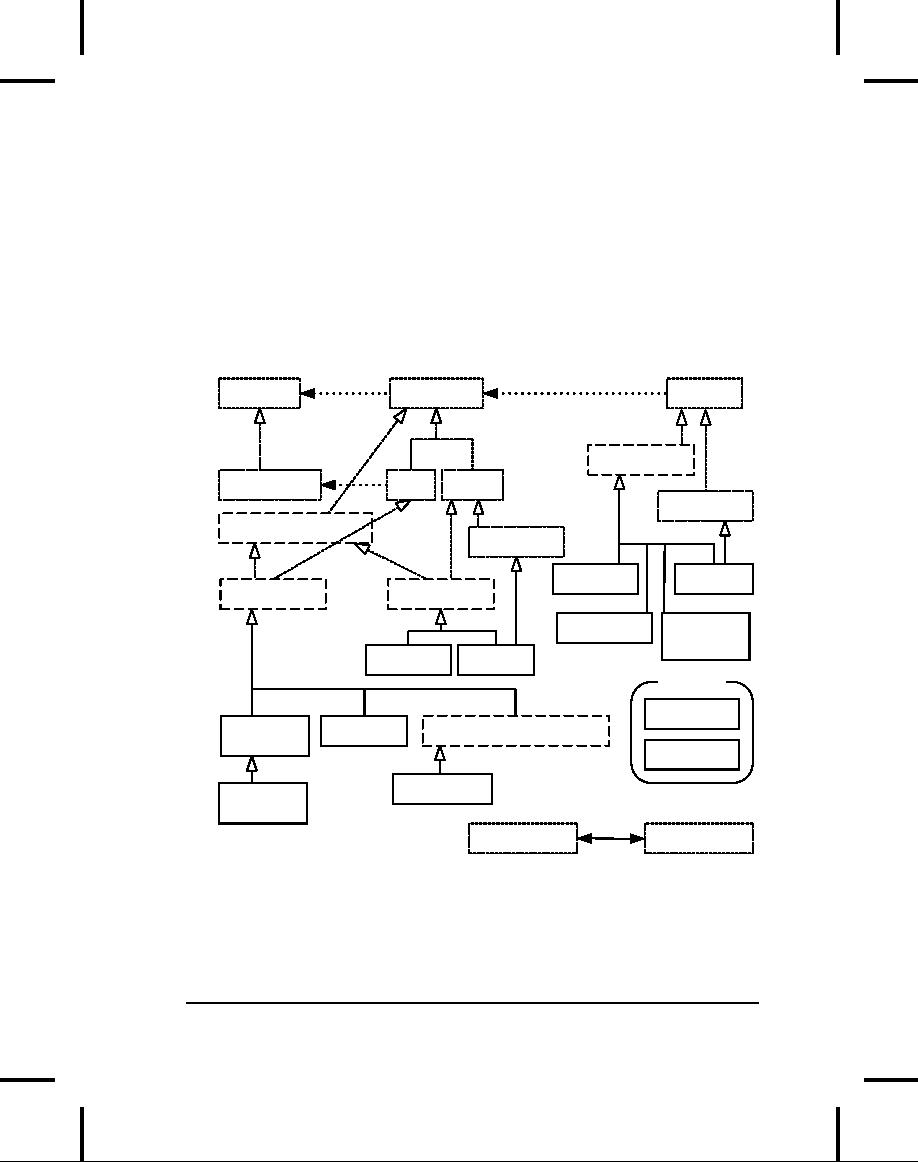
So
instead of saying this,
you'd say super.toString(
).
(This only works
if
you're directly inheriting
from Object,
or if none of your parent
classes
have
overridden the toString(
) method.)
Container
taxonomy
Collections
and Maps
may be implemented in different
ways, according
to
your programming needs. It's
helpful to look at a diagram of
the Java 2
containers:
Produces
Produces
Iterator
Collection
Map
AbstractMap
Produces
ListIterator
List
Set
SortedMap
AbstractCollection
SortedSet
HashMap
TreeMap
AbstractList
AbstractSet
Hashtable
WeakHashMap
(Legacy)
HashSet
TreeSet
Utilities
Collections
Vector
ArrayList
AbstractSequentialList
(Legacy)
Arrays
LinkedList
Stack
(Legacy)
Comparable
Comparator
This
diagram can be a bit
overwhelming at first, but
you'll see that
there
are
really only three container
components: Map,
List,
and Set,
and only
two
or three implementations of each
one (with, typically, a
preferred
version).
When you see this,
the containers are not so
daunting.
460
Thinking
in Java

The
dotted boxes represent
interfaces,
the dashed boxes
represent
abstract
classes,
and the solid boxes
are regular (concrete)
classes. The
dotted-line
arrows indicate that a
particular class is implementing
an
interface
(or
in the case of an abstract
class,
partially implementing
that
interface).
The solid arrows show
that a class can produce
objects of
the
class the arrow is pointing
to. For example, any
Collection
can
produce
an Iterator,
while a List
can
produce a ListIterator
(as
well as
an
ordinary Iterator,
since List
is
inherited from Collection).
The
interfaces that are
concerned with holding
objects are Collection,
List,
Set,
and Map.
Ideally, you'll write most
of your code to talk to
these
interfaces,
and the only place
where you'll specify the
precise type you're
using
is at the point of creation. So
you can create a List like
this:
List
x = new LinkedList();
Of
course, you can also
decide to make x
a
LinkedList
(instead
of a
generic
List)
and carry the precise
type information around with
x.
The
beauty
(and the intent) of using
the interface
is
that if you decide
you
want
to change your implementation,
all you need to do is change
it at the
point
of creation, like
this:
List
x = new ArrayList();
The
rest of your code can
remain untouched (some of
this genericity can
also
be achieved with
iterators).
In
the class hierarchy, you
can see a number of classes
whose names begin
with
"Abstract,"
and these can seem a
bit confusing at first. They
are
simply
tools that partially
implement a particular interface. If
you were
making
your own Set,
for example, you wouldn't
start with the Set
interface
and implement all the
methods, instead you'd
inherit from
AbstractSet
and
do the minimal necessary
work to make your new
class.
However,
the containers library
contains enough functionality to
satisfy
your
needs virtually all the
time. So for our purposes,
you can ignore
any
class
that begins with "Abstract."
Therefore,
when you look at the
diagram, you're really
concerned with
only
those interfaces
at the top of the diagram
and the concrete
classes
(those
with solid boxes around
them). You'll typically make
an object of a
concrete
class, upcast it to the
corresponding interface,
and then use
the
Chapter
9: Holding Your
Objects
461
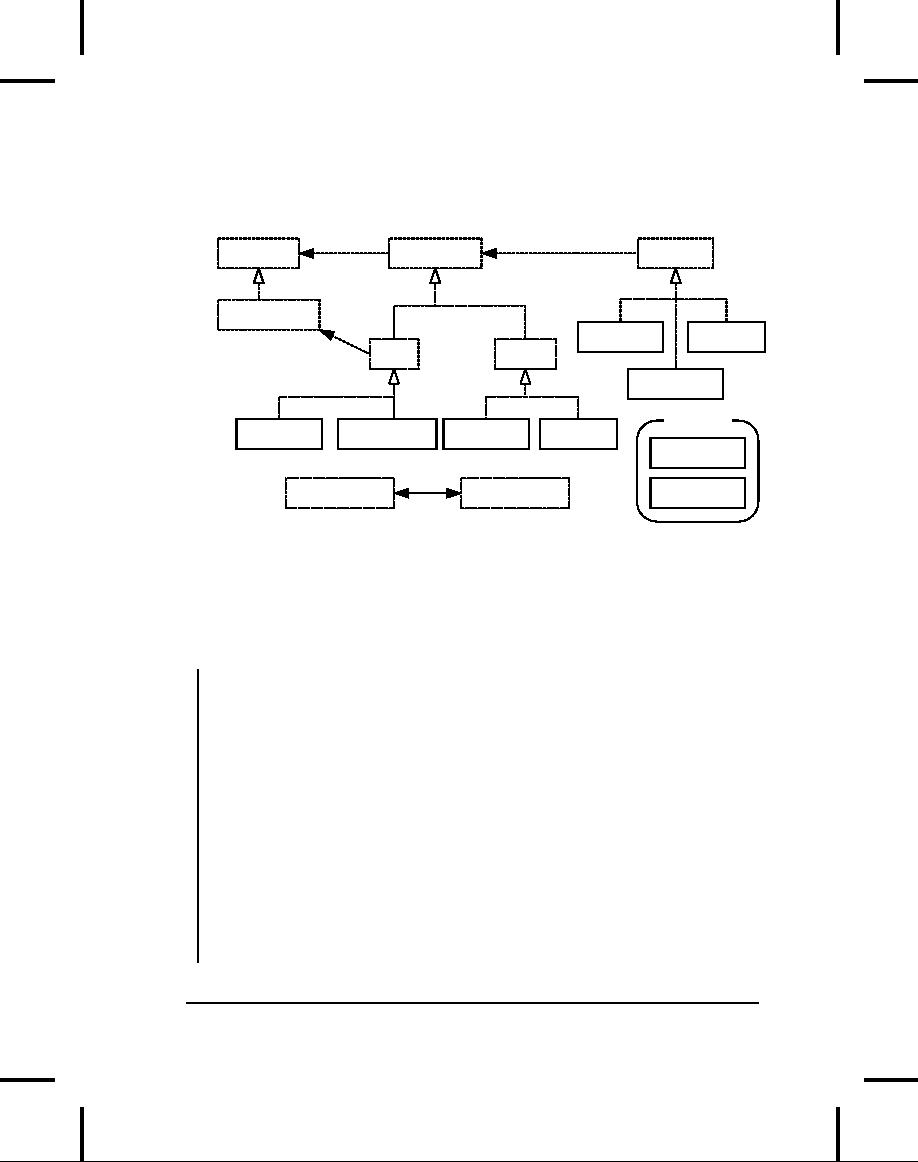
interface
throughout
the rest of your code. In
addition, you do not
need
to
consider the legacy elements
when writing new code.
Therefore, the
diagram
can be greatly simplified to
look like this:
Iterator
Collection
Map
Produces
Produces
ListIterator
HashMap
TreeMap
Produces
List
Set
WeakHashMap
Utilities
ArrayList
LinkedList
HashSet
TreeSet
Collections
Comparable
Comparator
Arrays
Now
it only includes the
interfaces and classes that
you will encounter on
a
regular basis, and also
the elements that we will
focus on in this
chapter.
Here's
a simple example, which
fills a Collection
(represented
here with
an
ArrayList)
with String
objects,
and then prints each
element in the
Collection:
//:
c09:SimpleCollection.java
//
A simple example using Java 2 Collections.
import
java.util.*;
public
class SimpleCollection {
public
static void main(String[] args) {
//
Upcast because we just want to
//
work with Collection features
Collection
c = new ArrayList();
for(int
i = 0; i < 10; i++)
c.add(Integer.toString(i));
Iterator
it = c.iterator();
while(it.hasNext())
System.out.println(it.next());
}
462
Thinking
in Java
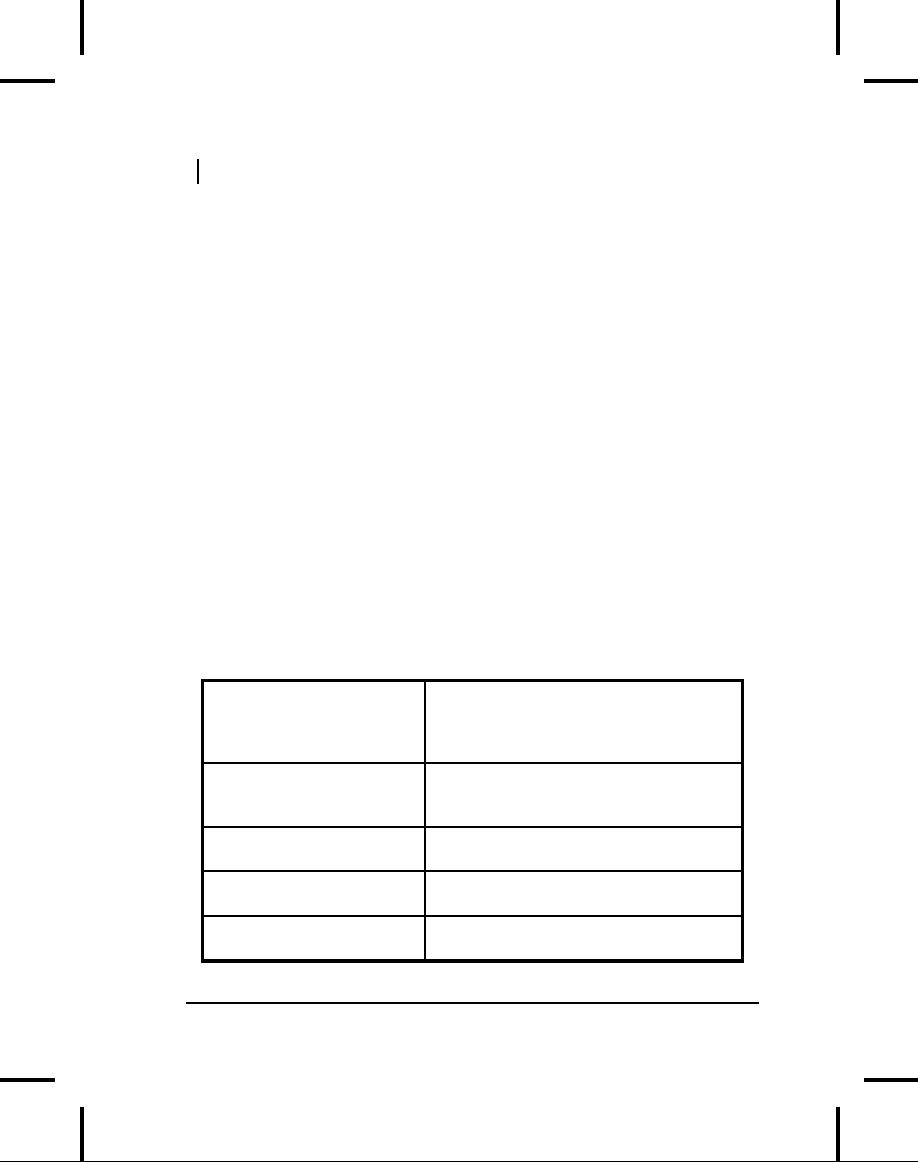
}
///:~
The
first line in main(
) creates
an ArrayList
object
and then upcasts it
to
a Collection.
Since this example uses
only the Collection
methods,
any
object of a class inherited
from Collection
would
work, but
ArrayList
is
the typical workhorse
Collection.
The
add( )
method,
as its name suggests, puts a
new element in the
Collection.
However, the documentation
carefully states that
add(
)
"ensures
that this Container contains
the specified element." This
is to
allow
for the meaning of Set,
which adds the element
only if it isn't
already
there. With an ArrayList,
or any sort of List,
add( )
always
means
"put it in," because
Lists
don't care if there are
duplicates.
All
Collections
can produce an Iterator
via
their iterator(
) method.
Here,
an Iterator
is
created and used to traverse
the Collection,
printing
each element.
Collection
functionality
The
following table shows
everything you can do with a
Collection
(not
including
the methods that
automatically come through
with Object),
and
thus, everything you can do
with a Set
or
a List.
(List
also
has
additional
functionality.) Maps
are not inherited from
Collection,
and
will
be treated separately.
boolean
add(Object)
Ensures
that the container holds
the
argument.
Returns false if it doesn't
add
the
argument. (This is an
"optional"
method,
described later in this
chapter.)
boolean
Adds
all the elements in the
argument.
addAll(Collection)
Returns
true if
any elements were
added.
("Optional.")
void
clear( )
Removes
all the elements in
the
container.
("Optional.")
boolean
true
if
the container holds
the
contains(Object)
argument.
boolean
true
if
the container holds all
the
containsAll(Collection)
elements
in the argument.
Chapter
9: Holding Your
Objects
463

boolean
isEmpty( )
true
if
the container has no
elements.
Iterator
iterator( )
Returns
an Iterator
that
you can use to
move
through the elements in
the
container.
boolean
If
the argument is in the
container, one
remove(Object)
instance
of that element is
removed.
Returns
true if
a removal occurred.
("Optional.")
boolean
Removes
all the elements that
are
removeAll(Collection)
contained
in the argument.
Returns
true
if
any removals
occurred.
("Optional.")
boolean
Retains
only elements that
are
retainAll(Collection)
contained
in the argument (an
"intersection"
from set theory).
Returns
true
if
any changes occurred.
("Optional.")
int
size( )
Returns
the number of elements in
the
container.
Object[]
toArray( )
Returns
an array containing all
the
elements
in the container.
Object[]
Returns
an array containing all
the
toArray(Object[]
a)
elements
in the container, whose type
is
that
of the array a rather than
plain
Object
(you
must cast the array to
the
right
type).
Notice
that there's no get(
) function
for random-access
element
selection.
That's because Collection
also
includes Set,
which maintains
its
own internal ordering (and
thus makes random-access
lookup
meaningless).
Thus, if you want to examine
all the elements of a
Collection
you
must use an iterator; that's
the only way to fetch
things
back.
The
following example demonstrates
all of these methods. Again,
these
work
with anything that inherits
from Collection,
but an ArrayList
is
used
as a kind of "least-common
denominator":
//:
c09:Collection1.java
464
Thinking
in Java

//
Things you can do with all Collections.
import
java.util.*;
import
com.bruceeckel.util.*;
public
class Collection1 {
public
static void main(String[] args) {
Collection
c = new ArrayList();
Collections2.fill(c,
Collections2.countries,
10);
c.add("ten");
c.add("eleven");
System.out.println(c);
//
Make an array from the List:
Object[]
array = c.toArray();
//
Make a String array from the List:
String[]
str =
(String[])c.toArray(new
String[1]);
//
Find max and min elements; this means
//
different things depending on the way
//
the Comparable interface is implemented:
System.out.println("Collections.max(c)
= " +
Collections.max(c));
System.out.println("Collections.min(c)
= " +
Collections.min(c));
//
Add a Collection to another Collection
Collection
c2 = new ArrayList();
Collections2.fill(c2,
Collections2.countries,
10);
c.addAll(c2);
System.out.println(c);
c.remove(CountryCapitals.pairs[0][0]);
System.out.println(c);
c.remove(CountryCapitals.pairs[1][0]);
System.out.println(c);
//
Remove all components that are in the
//
argument collection:
c.removeAll(c2);
System.out.println(c);
c.addAll(c2);
System.out.println(c);
//
Is an element in this Collection?
Chapter
9: Holding Your
Objects
465

String
val = CountryCapitals.pairs[3][0];
System.out.println(
"c.contains("
+ val + ") = "
+
c.contains(val));
//
Is a Collection in this Collection?
System.out.println(
"c.containsAll(c2)
= "+ c.containsAll(c2));
Collection
c3 = ((List)c).subList(3, 5);
//
Keep all the elements that are in both
//
c2 and c3 (an intersection of sets):
c2.retainAll(c3);
System.out.println(c);
//
Throw away all the elements
//
in c2 that also appear in c3:
c2.removeAll(c3);
System.out.println("c.isEmpty()
= " +
c.isEmpty());
c
= new ArrayList();
Collections2.fill(c,
Collections2.countries,
10);
System.out.println(c);
c.clear();
// Remove all elements
System.out.println("after
c.clear():");
System.out.println(c);
}
}
///:~
ArrayLists
are created containing
different sets of data and
upcast to
Collection
objects,
so it's clear that nothing
other than the Collection
interface
is being used. main(
) uses
simple exercises to show all
of the
methods
in Collection.
The
following sections describe
the various implementations of
List,
Set,
and
Map and
indicate in each case (with
an asterisk) which one
should be
your
default choice. You'll
notice that the legacy
classes Vector,
Stack,
and
Hashtable
are
not
included
because in all cases there
are preferred
classes
within the Java 2
Containers.
466
Thinking
in Java
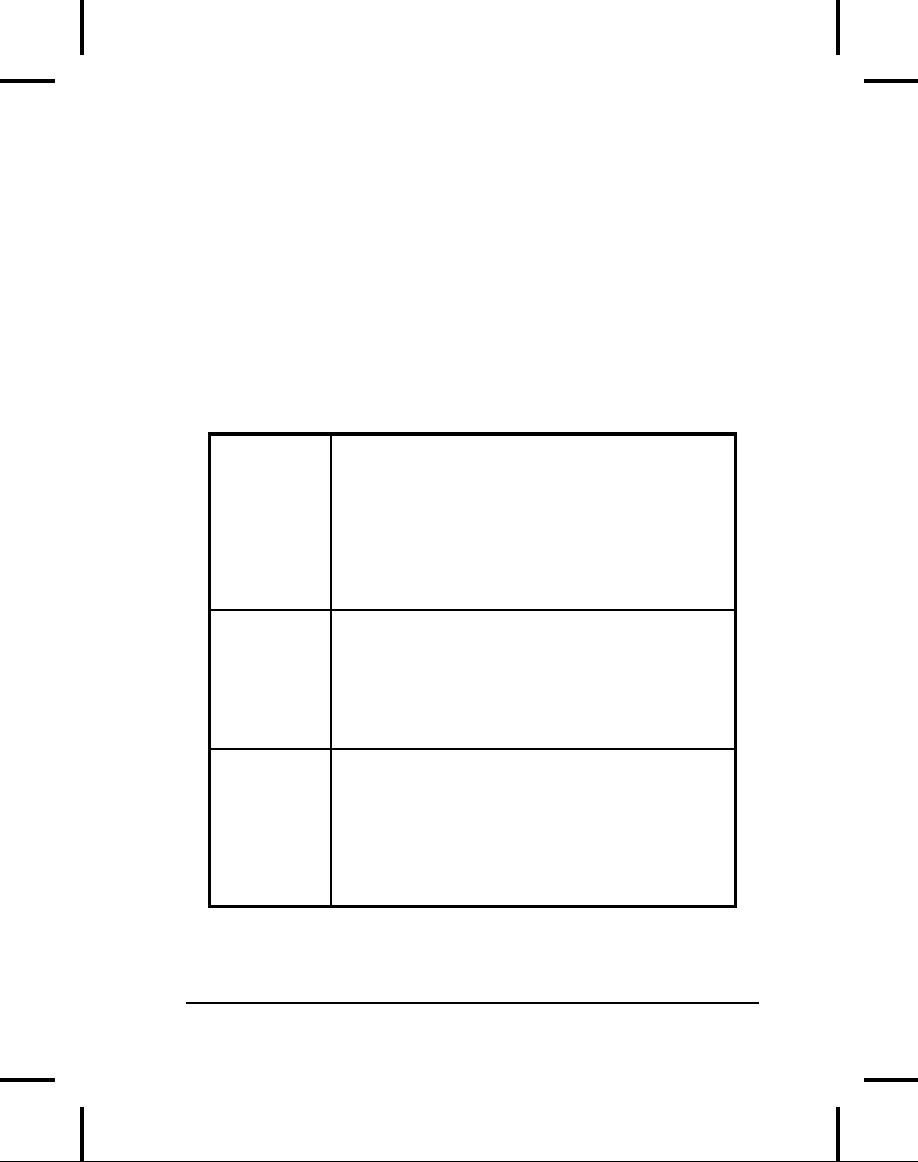
List
functionality
The
basic List
is
quite simple to use, as
you've seen so far
with
ArrayList.
Although most of the time
you'll just use add( )
to
insert
objects,
get( )
to
get them out one at a
time, and iterator(
) to
get an
Iterator
to
the sequence, there's also a
set of other methods that
can be
useful.
In
addition, there are actually
two types of List:
the basic ArrayList,
which
excels at randomly accessing
elements, and the much
more
powerful
LinkedList
(which
is not designed for fast
random access, but
has
a much more general set of
methods).
List
Order
is the most important
feature of a List;
it
(interface)
promises
to maintain elements in a
particular
sequence.
List adds
a number of methods to
Collection
that
allow insertion and removal
of
elements
in the middle of a List.
(This is
recommended
only for a LinkedList.)
A List
will
produce
a ListIterator,
and using this you
can
traverse
the List
in
both directions, as well as
insert
and
remove elements in the
middle of the List.
ArrayList*
A
List implemented
with an array. Allows
rapid
random
access to elements, but is
slow when
inserting
and removing elements from
the middle of
a
list. ListIterator
should
be used only for
back-
and-forth
traversal of an ArrayList,
but not for
inserting
and removing elements, which
is
expensive
compared to LinkedList.
LinkedList
Provides
optimal sequential access,
with
inexpensive
insertions and deletions
from the
middle
of the List.
Relatively slow for
random
access.
(Use ArrayList
instead.)
Also has
addFirst(
),
addLast(
),
getFirst(
),
getLast(
),
removeFirst(
),
and removeLast(
) (which
are
not
defined in any interfaces or
base classes) to
allow
it to be used as a stack, a queue,
and a deque.
The
methods in the following
example each cover a
different group of
activities:
things that every list
can do (basicTest(
)),
moving around
Chapter
9: Holding Your
Objects
467

with
an Iterator
(iterMotion(
))
versus changing things with
an
Iterator
(iterManipulation(
)),
seeing the effects of
List manipulation
(testVisual(
)),
and operations available
only to LinkedLists.
//:
c09:List1.java
//
Things you can do with Lists.
import
java.util.*;
import
com.bruceeckel.util.*;
public
class List1 {
public
static List fill(List a) {
Collections2.countries.reset();
Collections2.fill(a,
Collections2.countries,
10);
return
a;
}
static
boolean b;
static
Object o;
static
int i;
static
Iterator it;
static
ListIterator lit;
public
static void basicTest(List a) {
a.add(1,
"x"); // Add at location 1
a.add("x");
// Add at end
//
Add a collection:
a.addAll(fill(new
ArrayList()));
//
Add a collection starting at location 3:
a.addAll(3,
fill(new ArrayList()));
b
= a.contains("1"); // Is it in there?
//
Is the entire collection in there?
b
= a.containsAll(fill(new
ArrayList()));
//
Lists allow random access, which is cheap
//
for ArrayList, expensive for LinkedList:
o
= a.get(1); // Get object at location 1
i
= a.indexOf("1"); // Tell index of object
b
= a.isEmpty(); // Any elements inside?
it
= a.iterator(); // Ordinary Iterator
lit
= a.listIterator(); //
ListIterator
lit
= a.listIterator(3); // Start at loc 3
i
= a.lastIndexOf("1"); // Last match
a.remove(1);
// Remove location 1
468
Thinking
in Java

a.remove("3");
// Remove this object
a.set(1,
"y"); // Set location 1 to "y"
//
Keep everything that's in the argument
//
(the intersection of the two sets):
a.retainAll(fill(new
ArrayList()));
//
Remove everything that's in the argument:
a.removeAll(fill(new
ArrayList()));
i
= a.size(); // How big is it?
a.clear();
// Remove all elements
}
public
static void iterMotion(List a) {
ListIterator
it = a.listIterator();
b
= it.hasNext();
b
= it.hasPrevious();
o
= it.next();
i
= it.nextIndex();
o
= it.previous();
i
= it.previousIndex();
}
public
static void iterManipulation(List a) {
ListIterator
it = a.listIterator();
it.add("47");
//
Must move to an element after add():
it.next();
//
Remove the element that was just produced:
it.remove();
//
Must move to an element after remove():
it.next();
//
Change the element that was just produced:
it.set("47");
}
public
static void testVisual(List a) {
System.out.println(a);
List
b = new ArrayList();
fill(b);
System.out.print("b
= ");
System.out.println(b);
a.addAll(b);
a.addAll(fill(new
ArrayList()));
System.out.println(a);
//
Insert, remove, and replace elements
Chapter
9: Holding Your
Objects
469

//
using a ListIterator:
ListIterator
x = a.listIterator(a.size()/2);
x.add("one");
System.out.println(a);
System.out.println(x.next());
x.remove();
System.out.println(x.next());
x.set("47");
System.out.println(a);
//
Traverse the list backwards:
x
= a.listIterator(a.size());
while(x.hasPrevious())
System.out.print(x.previous()
+ " ");
System.out.println();
System.out.println("testVisual
finished");
}
//
There are some things that only
//
LinkedLists can do:
public
static void testLinkedList() {
LinkedList
ll = new LinkedList();
fill(ll);
System.out.println(ll);
//
Treat it like a stack, pushing:
ll.addFirst("one");
ll.addFirst("two");
System.out.println(ll);
//
Like "peeking" at the top of a stack:
System.out.println(ll.getFirst());
//
Like popping a stack:
System.out.println(ll.removeFirst());
System.out.println(ll.removeFirst());
//
Treat it like a queue, pulling elements
//
off the tail end:
System.out.println(ll.removeLast());
//
With the above operations, it's a dequeue!
System.out.println(ll);
}
public
static void main(String[] args) {
//
Make and fill a new list each time:
basicTest(fill(new
LinkedList()));
basicTest(fill(new
ArrayList()));
470
Thinking
in Java

iterMotion(fill(new
LinkedList()));
iterMotion(fill(new
ArrayList()));
iterManipulation(fill(new
LinkedList()));
iterManipulation(fill(new
ArrayList()));
testVisual(fill(new
LinkedList()));
testLinkedList();
}
}
///:~
In
basicTest(
) and
iterMotion( )
the
calls are simply made to
show
the
proper syntax, and while
the return value is
captured, it is not used.
In
some
cases, the return value
isn't captured since it
isn't typically used.
You
should look up the full
usage of each of these
methods in the online
documentation
from java.sun.com
before
you use them.
Making
a stack from a LinkedList
A
stack is sometimes referred to as a
"last-in, first-out" (LIFO)
container.
That
is, whatever you "push" on
the stack last is the
first item you
can
"pop"
out. Like all of the
other containers in Java,
what you push and
pop
are
Objects,
so you must cast what
you pop, unless you're
just using
Object
behavior.
The
LinkedList
has
methods that directly
implement stack
functionality,
so
you can also just
use a LinkedList
rather
than making a stack
class.
However,
a stack class can sometimes
tell the story
better:
//:
c09:StackL.java
//
Making a stack from a LinkedList.
import
java.util.*;
import
com.bruceeckel.util.*;
public
class StackL {
private
LinkedList list = new LinkedList();
public
void push(Object v) {
list.addFirst(v);
}
public
Object top() { return list.getFirst(); }
public
Object pop() {
return
list.removeFirst();
}
Chapter
9: Holding Your
Objects
471

public
static void main(String[] args) {
StackL
stack = new StackL();
for(int
i = 0; i < 10; i++)
stack.push(Collections2.countries.next());
System.out.println(stack.top());
System.out.println(stack.top());
System.out.println(stack.pop());
System.out.println(stack.pop());
System.out.println(stack.pop());
}
}
///:~
If
you want only stack
behavior, inheritance is inappropriate
here because
it
would produce a class with
all the rest of the
LinkedList
methods
(you'll
see later that this
very mistake was made by
the Java 1.0
library
designers
with Stack).
Making
a queue from a LinkedList
A
queue
is
a "first-in,
first-out" (FIFO)
container. That is, you
put things
in
at one end, and pull
them out at the other. So
the order in which
you
put
them in will be the same
order that they come
out. LinkedList
has
methods
to support queue behavior, so
these can be used in a
Queue
class:
//:
c09:Queue.java
//
Making a queue from a LinkedList.
import
java.util.*;
public
class Queue {
private
LinkedList list = new LinkedList();
public
void put(Object v) { list.addFirst(v); }
public
Object get() {
return
list.removeLast();
}
public
boolean isEmpty() {
return
list.isEmpty();
}
public
static void main(String[] args) {
Queue
queue = new Queue();
for(int
i = 0; i < 10; i++)
472
Thinking
in Java
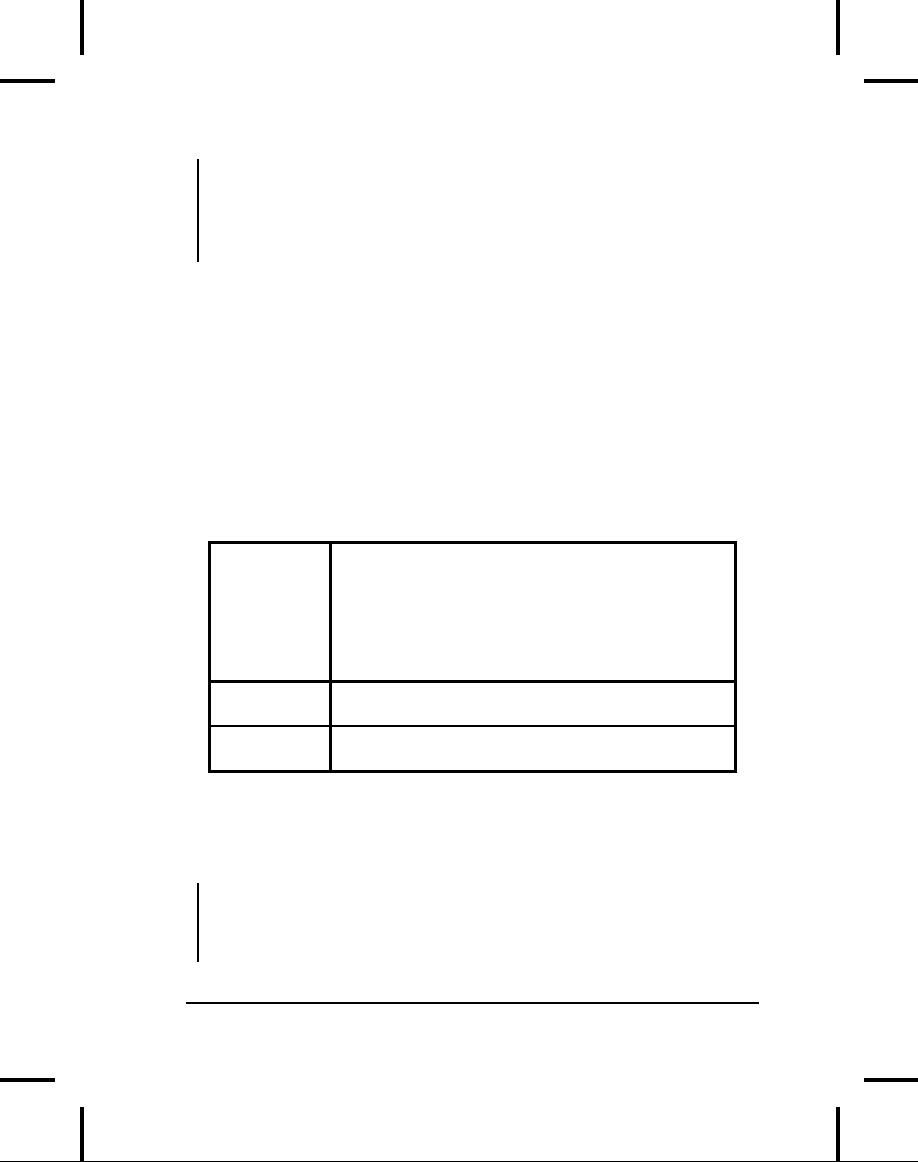
queue.put(Integer.toString(i));
while(!queue.isEmpty())
System.out.println(queue.get());
}
}
///:~
You
can also easily create a
deque
(double-ended
queue) from a
LinkedList.
This is like a queue, but
you can add and
remove elements
from
either end.
Set
functionality
Set
has
exactly the same interface
as Collection,
so there isn't any
extra
functionality
like there is with the
two different Lists.
Instead, the Set
is
exactly
a Collection,
it just has different
behavior. (This is the ideal
use
of
inheritance and polymorphism: to
express different behavior.) A
Set
refuses
to hold more than one
instance of each object
value (what
constitutes
the "value" of an object is
more complex, as you shall
see).
Set
Each
element that you add to
the Set
must
be
(interface)
unique;
otherwise the Set
doesn't
add the duplicate
element.
Objects
added to a Set
must
define
equals(
) to
establish object uniqueness.
Set
has
exactly
the same interface as
Collection.
The Set
interface
does not guarantee it will
maintain its
elements
in any particular
order.
HashSet*
For
Sets
where fast lookup time is
important.
Objects
must also define hashCode(
).
TreeSet
An
ordered Set
backed
by a tree. This way, you
can
extract
an ordered sequence from a
Set.
The
following example does
not
show
everything you can do with a
Set,
since
the interface is the same as
Collection,
and so was exercised in
the
previous
example. Instead, this
demonstrates the behavior
that makes a
Set
unique:
//:
c09:Set1.java
//
Things you can do with Sets.
import
java.util.*;
import
com.bruceeckel.util.*;
Chapter
9: Holding Your
Objects
473

public
class Set1 {
static
Collections2.StringGenerator gen =
Collections2.countries;
public
static void testVisual(Set a) {
Collections2.fill(a,
gen.reset(), 10);
Collections2.fill(a,
gen.reset(), 10);
Collections2.fill(a,
gen.reset(), 10);
System.out.println(a);
// No duplicates!
//
Add another set to this one:
a.addAll(a);
a.add("one");
a.add("one");
a.add("one");
System.out.println(a);
//
Look something up:
System.out.println("a.contains(\"one\"):
" +
a.contains("one"));
}
public
static void main(String[] args) {
System.out.println("HashSet");
testVisual(new
HashSet());
System.out.println("TreeSet");
testVisual(new
TreeSet());
}
}
///:~
Duplicate
values are added to the
Set,
but when it is printed
you'll see the
Set
has
accepted only one instance
of each value.
When
you run this program
you'll notice that the
order maintained by
the
HashSet
is
different from TreeSet,
since each has a different
way of
storing
elements so they can be
located later. (TreeSet
keeps
them
sorted,
while HashSet
uses
a hashing function, which is
designed
specifically
for rapid lookups.) When
creating your own types, be
aware
that
a Set
needs
a way to maintain a storage
order, which means
you
must
implement the Comparable
interface
and define the
compareTo(
) method.
Here's an example:
//:
c09:Set2.java
//
Putting your own type in a Set.
474
Thinking
in Java

import
java.util.*;
class
MyType implements Comparable {
private
int i;
public
MyType(int n) { i = n; }
public
boolean equals(Object o) {
return
(o
instanceof MyType)
&&
(i == ((MyType)o).i);
}
public
int hashCode() { return i; }
public
String toString() { return i + " "; }
public
int compareTo(Object o) {
int
i2 = ((MyType)o).i;
return
(i2 < i ? -1 : (i2 == i ? 0 : 1));
}
}
public
class Set2 {
public
static Set fill(Set a, int size) {
for(int
i = 0; i < size; i++)
a.add(new
MyType(i));
return
a;
}
public
static void test(Set a) {
fill(a,
10);
fill(a,
10); // Try to add duplicates
fill(a,
10);
a.addAll(fill(new
TreeSet(), 10));
System.out.println(a);
}
public
static void main(String[] args) {
test(new
HashSet());
test(new
TreeSet());
}
}
///:~
The
form for the definitions
for equals(
) and
hashCode(
) will
be
described
later in this chapter. You
must define an equals(
) in
both
cases,
but the hashCode(
) is
absolutely necessary only if
the class will
be
placed in a HashSet
(which
is likely, since that should
generally be
Chapter
9: Holding Your
Objects
475

your
first choice as a Set
implementation).
However, as a programming
style
you should always override
hashCode(
) when
you override
equals(
).
This process will be fully
detailed later in this
chapter.
In
the compareTo(
),
note that I did not use
the "simple and
obvious"
form
return
i-i2.
Although this is a common
programming error, it
would
only work properly if
i and
i2 were
"unsigned" ints
(if Java had
an
"unsigned"
keyword, which it does not).
It breaks for Java's signed
int,
which
is not big enough to
represent the difference of
two signed ints.
If i
is
a large positive integer and
j is
a large negative integer,
i-j will
overflow
and
return a negative value,
which will not
work.
SortedSet
If
you have a SortedSet
(of
which TreeSet
is
the only one available),
the
elements
are guaranteed to be in sorted
order which allows
additional
functionality
to be provided with these
methods in the SortedSet
interface:
Comparator
comparator(): Produces
the Comparator
used
for
this
Set,
or null
for
natural ordering.
Object
first(): Produces
the lowest element.
Object
last(): Produces
the highest element.
SortedSet
subSet(fromElement, toElement): Produces a
view
of
this Set
with
elements from fromElement,
inclusive, to
toElement,
exclusive.
SortedSet
headSet(toElement): Produces a
view of this Set
with
elements
less than toElement.
SortedSet
tailSet(fromElement): Produces a
view of this Set
with
elements greater than or
equal to fromElement.
Map
functionality
An
ArrayList
allows
you to select from a
sequence of objects using
a
number,
so in a sense it associates numbers to
objects. But what if
you'd
like
to select from a sequence of
objects using some other
criterion? A
stack
is an example: its selection
criterion is "the last thing
pushed on the
stack."
A powerful twist on this
idea of "selecting from a
sequence" is
476
Thinking
in Java
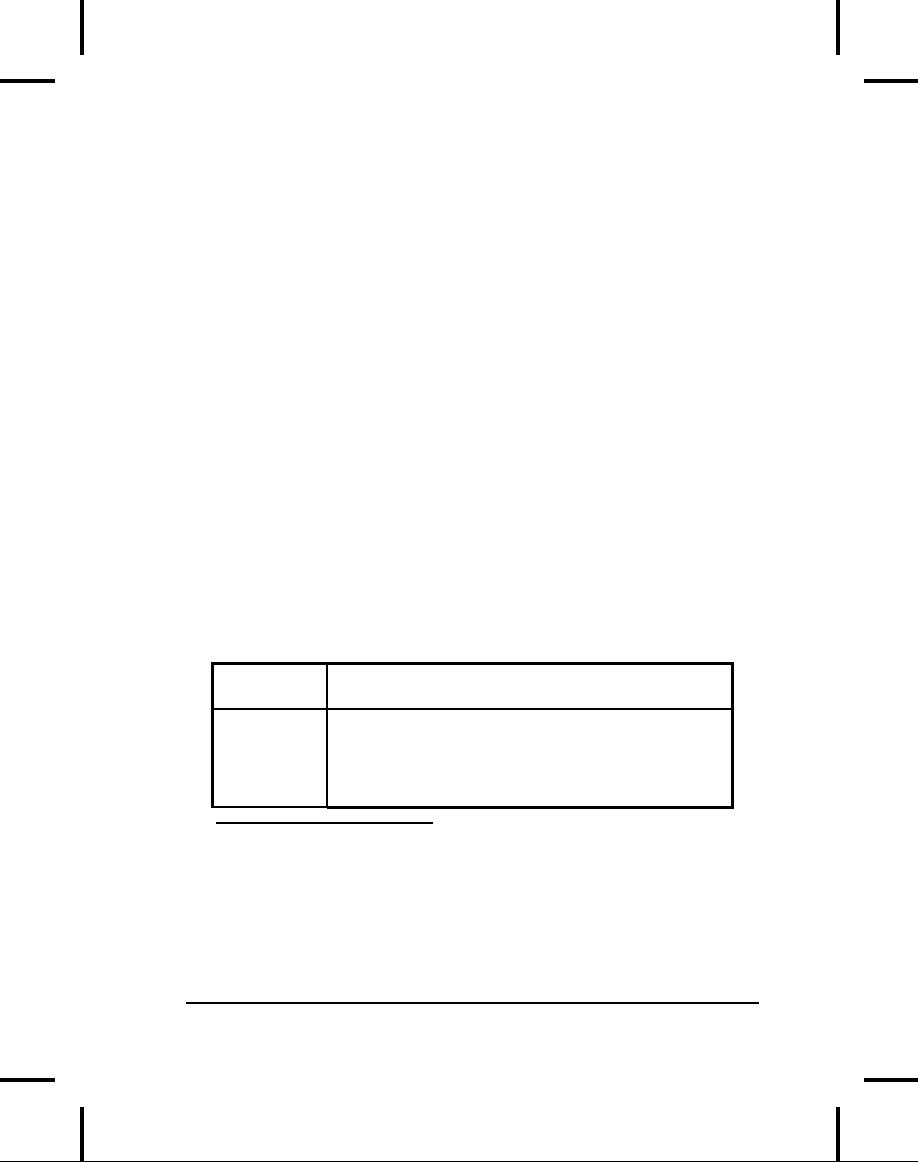
alternately
termed a map,
a dictionary,
or
an associative
array.
Conceptually,
it seems like an ArrayList,
but instead of looking
up
objects
using a number, you look
them up using another
object! This
is
often
a key process in a
program.
The
concept shows up in Java as
the Map
interface.
The put(Object
key,
Object value) method
adds a value (the thing
you want), and
associates
it with a key (the thing
you look it up with).
get(Object
key)
produces
the value given the
corresponding key. You can
also test a Map
to
see if it contains a key or a
value with containsKey(
) and
containsValue(
).
The
standard Java library
contains two different types
of Maps:
HashMap
and
TreeMap.
Both have the same
interface (since they
both
implement
Map),
but they differ in one
distinct way: efficiency. If
you
look
at what must be done for a
get(
),
it seems pretty slow to
search
through
(for example) an ArrayList
for
the key. This is where
HashMap
speeds
things up. Instead of a slow
search for the key, it
uses a special
value
called a hash
code. The
hash code is a way to take
some information
in
the object in question and
turn it into a "relatively
unique" int
for
that
object.
All Java objects can
produce a hash code, and
hashCode(
) is
a
method
in the root class Object.
A HashMap
takes
the hashCode(
) of
the
object and uses it to
quickly hunt for the
key. This results in
a
dramatic
performance improvement7.
Map
Maintains
key-value associations (pairs), so
you can
(interface)
look
up a value using a
key.
HashMap*
Implementation
based on a hash table. (Use
this
instead
of Hashtable.)
Provides constant-time
performance
for inserting and locating
pairs.
Performance
can be adjusted via
constructors that
allow
you to set the capacity
and
load
factor of
the
7
If these
speedups still don't meet
your performance needs, you
can further accelerate
table
lookup by writing your own
Map and
customizing it to your particular types
to avoid
delays
due to casting to and from
Objects.
To reach even higher levels of
performance,
speed
enthusiasts can use Donald
Knuth's The
Art of Computer Programming, Volume
3:
Sorting
and Searching, Second
Edition to replace
overflow bucket lists with
arrays that
have
two additional benefits:
they can be optimized for
disk storage characteristics
and
they
can save most of the time of creating and garbage
collecting individual records.
Chapter
9: Holding Your
Objects
477
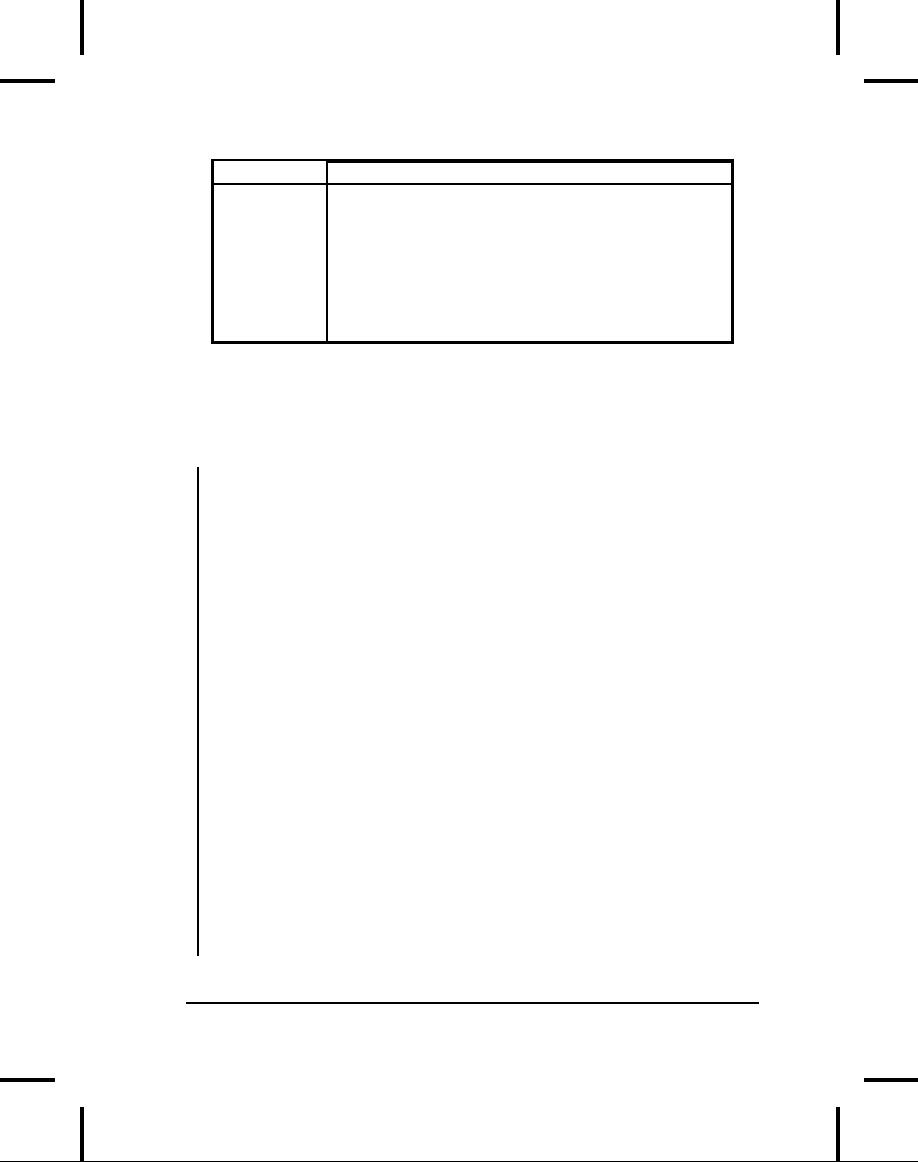
hash
table.
TreeMap
Implementation
based on a red-black tree.
When
you
view the keys or the
pairs, they will be in
sorted
order
(determined by Comparable
or
Comparator,
discussed later). The point
of a
TreeMap
is
that you get the
results in sorted
order.
TreeMap
is
the only Map
with
the subMap(
)
method,
which allows you to return a
portion of the
tree.
Sometimes
you'll also need to know
the details of how hashing
works, so
we'll
look at that a little
later.
The
following example uses the
Collections2.fill(
) method
and the test
data
sets that were previously
defined:
//:
c09:Map1.java
//
Things you can do with Maps.
import
java.util.*;
import
com.bruceeckel.util.*;
public
class Map1 {
static
Collections2.StringPairGenerator geo =
Collections2.geography;
static
Collections2.RandStringPairGenerator
rsp
= Collections2.rsp;
//
Producing a Set of the keys:
public
static void printKeys(Map m) {
System.out.print("Size
= " + m.size() +", ");
System.out.print("Keys:
");
System.out.println(m.keySet());
}
//
Producing a Collection of the values:
public
static void printValues(Map m) {
System.out.print("Values:
");
System.out.println(m.values());
}
public
static void test(Map m) {
Collections2.fill(m,
geo, 25);
//
Map has 'Set' behavior for keys:
Collections2.fill(m,
geo.reset(), 25);
478
Thinking
in Java

printKeys(m);
printValues(m);
System.out.println(m);
String
key = CountryCapitals.pairs[4][0];
String
value = CountryCapitals.pairs[4][1];
System.out.println("m.containsKey(\""
+ key +
"\"):
" + m.containsKey(key));
System.out.println("m.get(\""
+ key + "\"): "
+
m.get(key));
System.out.println("m.containsValue(\""
+
value + "\"): " +
m.containsValue(value));
Map
m2 = new TreeMap();
Collections2.fill(m2,
rsp, 25);
m.putAll(m2);
printKeys(m);
key
= m.keySet().iterator().next().toString();
System.out.println("First
key in map: "+key);
m.remove(key);
printKeys(m);
m.clear();
System.out.println("m.isEmpty():
"
+
m.isEmpty());
Collections2.fill(m,
geo.reset(), 25);
//
Operations on the Set change the Map:
m.keySet().removeAll(m.keySet());
System.out.println("m.isEmpty():
"
+
m.isEmpty());
}
public
static void main(String[] args) {
System.out.println("Testing
HashMap");
test(new
HashMap());
System.out.println("Testing
TreeMap");
test(new
TreeMap());
}
}
///:~
The
printKeys(
) and
printValues( )
methods
are not only
useful
utilities,
they also demonstrate how to
produce Collection
views
of a
Map.
The keySet(
) method
produces a Set
backed
by the keys in the
Map.
Similar treatment is given to
values(
),
which produces a
Chapter
9: Holding Your
Objects
479

Collection
containing
all the values in the
Map. (Note
that keys must be
unique,
while values may contain
duplicates.) Since these
Collections
are
backed by the Map,
any changes in a Collection
will
be reflected in
the
associated Map.
The
rest of the program provides
simple examples of each
Map operation,
and
tests each type of Map.
As
an example of the use of a
HashMap,
consider a program to check
the
randomness
of Java's Math.random(
) method.
Ideally, it would
produce
a perfect distribution of random
numbers, but to test this
you
need
to generate a bunch of random
numbers and count the
ones that fall
in
the various ranges. A
HashMap
is
perfect for this, since it
associates
objects
with objects (in this
case, the value object
contains the number
produced
by Math.random(
) along
with the number of times
that
number
appears):
//:
c09:Statistics.java
//
Simple demonstration of HashMap.
import
java.util.*;
class
Counter {
int
i = 1;
public
String toString() {
return
Integer.toString(i);
}
}
class
Statistics {
public
static void main(String[] args) {
HashMap
hm = new HashMap();
for(int
i = 0; i < 10000; i++) {
//
Produce a number between 0 and 20:
Integer
r =
new
Integer((int)(Math.random() * 20));
if(hm.containsKey(r))
((Counter)hm.get(r)).i++;
else
hm.put(r,
new Counter());
}
System.out.println(hm);
480
Thinking
in Java

}
}
///:~
In
main(
),
each time a random number is
generated it is wrapped
inside
an
Integer
object
so that reference can be
used with the HashMap.
(You
can't
use a primitive with a
container, only an object
reference.) The
containsKey(
) method
checks to see if this key is
already in the
container.
(That is, has the
number been found already?)
If so, the get(
)
method
produces the associated
value for the key,
which in this case is
a
Counter
object.
The value i
inside
the counter is incremented to
indicate
that
one more of this particular
random number has been
found.
If
the key has not
been found yet, the
method put(
) will
place a new key-
value
pair into the HashMap.
Since Counter
automatically
initializes its
variable
i to
one when it's created, it
indicates the first
occurrence of this
particular
random number.
To
display the HashMap,
it is simply printed. The
HashMap
toString(
) method
moves through all the
key-value pairs and calls
the
toString(
) for
each one. The Integer.toString(
) is
predefined, and
you
can see the toString(
) for
Counter.
The output from one
run (with
some
line breaks added)
is:
{19=526,
18=533, 17=460, 16=513, 15=521, 14=495,
13=512,
12=483, 11=488, 10=487, 9=514, 8=523,
7=497,
6=487, 5=480, 4=489, 3=509, 2=503, 1=475,
0=505}
You
might wonder at the
necessity of the class
Counter,
which
seems like
it
doesn't even have the
functionality of the wrapper
class Integer.
Why
not
use int
or
Integer?
Well, you can't use an
int because
all of the
containers
can hold only Object
references.
After seeing containers
the
wrapper
classes might begin to make
a little more sense to you,
since you
can't
put any of the primitive
types in containers. However,
the only thing
you
can
do
with the Java wrappers is to
initialize them to a
particular
value
and read that value.
That is, there's no way to
change a value once a
wrapper
object has been created.
This makes the Integer
wrapper
immediately
useless to solve our
problem, so we're forced to
create a new
class
that does satisfy the
need.
Chapter
9: Holding Your
Objects
481

SortedMap
If
you have a SortedMap
(of
which TreeMap
is
the only one
available),
the
keys are guaranteed to be in
sorted order which allows
additional
functionality
to be provided with these
methods in the SortedMap
interface:
Comparator
comparator(): Produces
the comparator used for
this
Map,
or null
for
natural ordering.
Object
firstKey(): Produces
the lowest key.
Object
lastKey(): Produces
the highest key.
SortedMap
subMap(fromKey, toKey): Produces a
view of this
Map
with
keys from fromKey,
inclusive, to toKey,
exclusive.
SortedMap
headMap(toKey): Produces a
view of this Map
with
keys
less than toKey.
SortedMap
tailMap(fromKey): Produces a
view of this Map
with
keys
greater than or equal to
fromKey.
Hashing
and hash codes
In
the previous example, a
standard library class
(Integer)
was used as a
key
for the HashMap.
It worked fine as a key,
because it has all
the
necessary
wiring to make it work
correctly as a key. But a
common pitfall
occurs
with HashMaps
when you create your
own classes to be used
as
keys.
For example, consider a
weather predicting system
that matches
Groundhog
objects
to Prediction
objects.
It seems fairly
straightforward--you
create the two classes,
and use Groundhog
as
the
key
and Prediction
as
the value:
//:
c09:SpringDetector.java
//
Looks plausible, but doesn't work.
import
java.util.*;
class
Groundhog {
int
ghNumber;
Groundhog(int
n) { ghNumber = n; }
}
class
Prediction {
482
Thinking
in Java

boolean shadow =
Math.random() > 0.5;
public
String toString() {
if(shadow)
return
"Six more weeks of Winter!";
else
return
"Early Spring!";
}
}
public
class SpringDetector {
public
static void main(String[] args) {
HashMap
hm = new HashMap();
for(int
i = 0; i < 10; i++)
hm.put(new
Groundhog(i), new Prediction());
System.out.println("hm
= " + hm + "\n");
System.out.println(
"Looking
up prediction for Groundhog #3:");
Groundhog
gh = new Groundhog(3);
if(hm.containsKey(gh))
System.out.println((Prediction)hm.get(gh));
else
System.out.println("Key
not found: " + gh);
}
}
///:~
Each
Groundhog
is
given an identity number, so
you can look up a
Prediction
in
the HashMap
by
saying, "Give me the
Prediction
associated
with Groundhog
number
3." The Prediction
class
contains
a
boolean
that
is initialized using Math.random(
),
and a toString(
)
that
interprets the result for
you. In main(
),
a HashMap
is
filled with
Groundhogs
and their associated
Predictions.
The HashMap
is
printed
so you can see that it
has been filled. Then a
Groundhog
with
an
identity
number of 3 is used as a key to
look up the prediction
for
Groundhog
#3
(which you can see
must be in the Map).
It
seems simple enough, but it
doesn't work. The problem is
that
Groundhog
is
inherited from the common
root class Object
(which
is
what
happens if you don't specify
a base class, thus all
classes are
ultimately
inherited from Object).
It is Object's
hashCode(
) method
that
is used to generate the hash
code for each object,
and by default it
just
uses the address of its
object. Thus, the first
instance of
Chapter
9: Holding Your
Objects
483

Groundhog(3)
does
not
produce
a hash code equal to the
hash code for
the
second instance of Groundhog(3)
that
we tried to use as a
lookup.
You
might think that all
you need to do is write an
appropriate override
for
hashCode(
).
But it still won't work
until you've done one
more
thing:
override the equals(
) that
is also part of Object.
This method is
used
by the HashMap
when
trying to determine if your
key is equal to
any
of the keys in the table.
Again, the default Object.equals(
) simply
compares
object addresses, so one
Groundhog(3)
is
not equal to
another
Groundhog(3).
Thus,
to use your own classes as
keys in a HashMap,
you must override
both
hashCode(
) and
equals(
),
as shown in the following
solution to
the
problem above:
//:
c09:SpringDetector2.java
//
A class that's used as a key in a HashMap
//
must override hashCode() and equals().
import
java.util.*;
class
Groundhog2 {
int
ghNumber;
Groundhog2(int
n) { ghNumber = n; }
public
int hashCode() { return ghNumber; }
public
boolean equals(Object o) {
return
(o instanceof Groundhog2)
&&
(ghNumber == ((Groundhog2)o).ghNumber);
}
}
public
class SpringDetector2 {
public
static void main(String[] args) {
HashMap
hm = new HashMap();
for(int
i = 0; i < 10; i++)
hm.put(new
Groundhog2(i),new Prediction());
System.out.println("hm
= " + hm + "\n");
System.out.println(
"Looking
up prediction for groundhog #3:");
Groundhog2
gh = new Groundhog2(3);
if(hm.containsKey(gh))
System.out.println((Prediction)hm.get(gh));
484
Thinking
in Java

}
}
///:~
Note
that this uses the
Prediction
class
from the previous example,
so
SpringDetector.java
must
be compiled first or you'll
get a compile-
time
error when you try to
compile SpringDetector2.java.
Groundhog2.hashCode(
) returns
the groundhog number as
an
identifier.
In this example, the
programmer is responsible for
ensuring
that
no two groundhogs exist with
the same ID number.
The
hashCode(
) is
not required to return a
unique identifier
(something
you'll
understand better later in
this chapter), but the
equals( )
method
must
be able to strictly determine
whether two objects are
equivalent.
Even
though it appears that the
equals( )
method
is only checking to
see
whether
the argument is an instance of
Groundhog2
(using
the
instanceof
keyword,
which is fully explained in
Chapter 12), the
instanceof
actually
quietly does a second sanity
check, to see if the
object
is null,
since instanceof
produces
false
if
the left-hand
argument
is
null.
Assuming it's the correct
type and not null,
the comparison is
based
on the actual ghNumbers.
This time, when you
run the program,
you'll
see it produces the correct
output.
When
creating your own class to
use in a HashSet,
you must pay
attention
to the same issues as when
it is used as a key in a HashMap.
Understanding
hashCode(
)
The
above example is only a
start toward solving the
problem correctly. It
shows
that if you do not override
hashCode(
) and
equals( )
for
your
key,
the hashed data structure
(HashSet
or
HashMap)
will not be able
to
deal with your key
properly. However, to get a
good solution for
the
problem
you need to understand
what's going on inside the
hashed data
structure.
First,
consider the motivation
behind hashing: you want to
look up an
object
using another object. But
you can accomplish this
with a TreeSet
or
TreeMap,
too. It's also possible to
implement your own Map.
To do
so,
the Map.entrySet(
) method
must be supplied to produce a
set of
Map.Entry
objects.
MPair will
be defined as the new type
of
Chapter
9: Holding Your
Objects
485

Map.Entry.
In order for it to be placed in a
TreeSet
it
must implement
equals(
) and
be Comparable:
//:
c09:MPair.java
//
A Map implemented with ArrayLists.
import
java.util.*;
public
class MPair
implements
Map.Entry, Comparable {
Object
key, value;
MPair(Object
k, Object v) {
key
= k;
value
= v;
}
public
Object getKey() { return key; }
public
Object getValue() { return value; }
public
Object setValue(Object v){
Object
result = value;
value
= v;
return
result;
}
public
boolean equals(Object o) {
return
key.equals(((MPair)o).key);
}
public
int compareTo(Object rv) {
return
((Comparable)key).compareTo(
((MPair)rv).key);
}
}
///:~
Notice
that the comparisons are
only interested in the keys,
so duplicate
values
are perfectly
acceptable.
The
following example implements a
Map using
a pair of ArrayLists:
//:
c09:SlowMap.java
//
A Map implemented with ArrayLists.
import
java.util.*;
import
com.bruceeckel.util.*;
public
class SlowMap extends AbstractMap {
private
ArrayList
486
Thinking
in Java

keys = new
ArrayList(),
values
= new ArrayList();
public
Object put(Object key, Object value) {
Object
result = get(key);
if(!keys.contains(key))
{
keys.add(key);
values.add(value);
}
else
values.set(keys.indexOf(key),
value);
return
result;
}
public
Object get(Object key) {
if(!keys.contains(key))
return
null;
return
values.get(keys.indexOf(key));
}
public
Set entrySet() {
Set
entries = new HashSet();
Iterator
ki
= keys.iterator(),
vi
= values.iterator();
while(ki.hasNext())
entries.add(new
MPair(ki.next(), vi.next()));
return
entries;
}
public
static void main(String[] args) {
SlowMap
m = new SlowMap();
Collections2.fill(m,
Collections2.geography,
25);
System.out.println(m);
}
}
///:~
The
put( )
method
simply places the keys
and values in
corresponding
ArrayLists.
In main(
),
a SlowMap
is
loaded and then printed to
show
that
it works.
This
shows that it's not
that hard to produce a new
type of Map.
But as
the
name suggests, a SlowMap
isn't
very fast, so you probably
wouldn't
use
it if you had an alternative
available. The problem is in
the lookup of
Chapter
9: Holding Your
Objects
487

the
key: there is no order so a
simple linear search is
used, which is the
slowest
way to look something
up.
The
whole point of hashing is
speed: hashing allows the
lookup to happen
quickly.
Since the bottleneck is in
the speed of the key
lookup, one of the
solutions
to the problem could be by
keeping the keys sorted
and then
using
Collections.binarySearch(
) to
perform the lookup (an
exercise
at
the end of this chapter
will walk you through
this process).
Hashing
goes further by saying that
all you want to do is to
store the key
somewhere
so
that it can be quickly
found. As you've seen in
this chapter,
the
fastest structure in which to
store a group of elements is an
array, so
that
will be used for
representing the key
information (note carefully
that
I
said "key information," and
not the key itself).
Also seen in this
chapter
was
the fact that an array,
once allocated, cannot be
resized, so we have a
problem:
we want to be able to store
any number of values in the
Map,
but
if the number of keys is
fixed by the array size,
how can this
be?
The
answer is that the array
will not hold the
keys. From the key
object, a
number
will be derived that will
index into the array.
This number is the
hash
code, produced by
the hashCode(
) method
(in computer science
parlance,
this is the hash
function) defined in
Object
and
presumably
overridden
by your class. To solve the
problem of the fixed-size
array,
more
than one key may
produce the same index.
That is, there may
be
collisions.
Because of this, it doesn't
matter how big the
array is because
each
key object will land
somewhere in that
array.
So
the process of looking up a
value starts by computing
the hash code
and
using it to index into the
array. If you could
guarantee that there
were
no
collisions (which could be
possible if you have a fixed
number of
values)
then you'd have a perfect
hashing function, but
that's a special
case.
In all other cases,
collisions are handled by
external
chaining: the
array
points not directly to a
value, but instead to a list
of values. These
values
are searched in a linear
fashion using the equals( )
method.
Of
course,
this aspect of the search is
much slower, but if the
hash function is
good
there will only be a few
values in each slot, at the
most. So instead of
searching
through the entire list,
you quickly jump to a slot
where you
have
to compare a few entries to
find the value. This is
much faster, which
is
why the HashMap
is
so quick.
488
Thinking
in Java

Knowing
the basics of hashing, it's
possible to implement a simple
hashed
Map:
//:
c09:SimpleHashMap.java
//
A demonstration hashed Map.
import
java.util.*;
import
com.bruceeckel.util.*;
public
class SimpleHashMap extends AbstractMap
{
//
Choose a prime number for the hash table
//
size, to achieve a uniform distribution:
private
final static int SZ = 997;
private
LinkedList[] bucket= new
LinkedList[SZ];
public
Object put(Object key, Object value) {
Object
result = null;
int
index = key.hashCode() % SZ;
if(index
< 0) index = -index;
if(bucket[index]
== null)
bucket[index]
= new LinkedList();
LinkedList
pairs = bucket[index];
MPair
pair = new MPair(key, value);
ListIterator
it = pairs.listIterator();
boolean
found = false;
while(it.hasNext())
{
Object
iPair = it.next();
if(iPair.equals(pair))
{
result
= ((MPair)iPair).getValue();
it.set(pair);
// Replace old with new
found
= true;
break;
}
}
if(!found)
bucket[index].add(pair);
return
result;
}
public
Object get(Object key) {
int
index = key.hashCode() % SZ;
if(index
< 0) index = -index;
if(bucket[index]
== null) return null;
LinkedList
pairs = bucket[index];
Chapter
9: Holding Your
Objects
489

MPair match = new MPair(key,
null);
ListIterator
it = pairs.listIterator();
while(it.hasNext())
{
Object
iPair = it.next();
if(iPair.equals(match))
return
((MPair)iPair).getValue();
}
return
null;
}
public
Set entrySet() {
Set
entries = new HashSet();
for(int
i = 0; i < bucket.length; i++) {
if(bucket[i]
== null) continue;
Iterator
it = bucket[i].iterator();
while(it.hasNext())
entries.add(it.next());
}
return
entries;
}
public
static void main(String[] args) {
SimpleHashMap
m = new SimpleHashMap();
Collections2.fill(m,
Collections2.geography,
25);
System.out.println(m);
}
}
///:~
Because
the "slots" in a hash table
are often referred to as
buckets,
the
array
that represents the actual
table is called bucket.
To promote even
distribution,
the number of buckets is
typically a prime number.
Notice
that
it is an array of LinkedList,
which automatically provides
for
collisions--each
new item is simply added to
the end of the
list.
The
return value of put(
) is
null or,
if the key was already in
the list, the
old
value associated with that
key. The return value is
result,
which is
initialized
to null,
but if a key is discovered in
the list then result
is
assigned
to that key.
For
both put(
) and
get(
),
the first thing that
happens is that the
hashCode(
) is
called for the key,
and the result is forced to
a positive
number.
Then it is forced to fit
into the bucket
array
using the modulus
490
Thinking
in Java

operator
and the size of the
array. If that location is
null,
it means there
are
no elements that hash to
that location, so a new
LinkedList
is
created
to hold the object that
just did. However, the
normal process is to
look
through the list to see if
there are duplicates, and if
there are, the
old
value
is put into result
and
the new value replaces
the old. The found
flag
keeps track of whether an
old key-value pair was
found and, if not,
the
new pair is appended to the
end of the list.
In
get(
),
you'll see very similar
code as that contained in
put( ),
but
simpler.
The index is calculated into
the bucket
array,
and if a
LinkedList
exists
it is searched for a
match.
entrySet(
) must
find and traverse all
the lists, adding them to
the result
Set.
Once this method has
been created, the Map can
be tested by filling
it
with values and then
printing them.
HashMap
performance
factors
To
understand the issues, some
terminology is necessary:
Capacity: The
number of buckets in the
table.
Initial
capacity: The
number of buckets when the
table is created.
HashMap
and
HashSet:
have constructors that allow
you to specify
the
initial capacity.
Size: The
number of entries currently in
the table.
Load
factor: size/capacity.
A load factor of 0 is an empty
table, 0.5
is
a half-full table, etc. A
lightly-loaded table will
have few collisions
and
so is optimal for insertions
and lookups (but will
slow down the
process
of traversing with an iterator).
HashMap
and
HashSet
have
constructors
that allow you to specify
the load factor, which
means
that
when this load factor is
reached the container will
automatically
increase
the capacity (the number of
buckets) by roughly doubling
it,
and
will redistribute the
existing objects into the
new set of buckets
(this
is called rehashing).
The
default load factor used by
HashMap
is
0.75 (it doesn't rehash
until
the
table is � full). This seems
to be a good trade-off between
time and
space
costs. A higher load factor
decreases the space required
by the table
but
increases the lookup cost,
which is important because
lookup is what
you
do most of the time
(including both get(
) and
put( )).
Chapter
9: Holding Your
Objects
491

If you
know that you'll be storing
many entries in a HashMap,
creating it
with
an appropriately large initial
capacity will prevent the
overhead of
automatic
rehashing.
Overriding
hashCode(
)
Now
that you understand what's
involved in the function of
the
HashMap,
the issues involved in
writing a hashCode(
) will
make more
sense.
First
of all, you don't have
control of the creation of
the actual value
that's
used
to index into the array of
buckets. That is dependent on
the capacity
of
the particular HashMap
object,
and that capacity changes
depending
on
how full the container
is, and what the
load factor is. The
value
produced
by your hashCode(
) will
be further processed in order
to
create
the bucket index (in
SimpleHashMap
the
calculation is just a
modulo
by the size of the bucket
array).
The
most important factor in
creating a hashCode(
) is
that, regardless
of
when hashCode(
) is
called, it produces the same
value for a
particular
object every time it is
called. If you end up with
an object that
produces
one hashCode(
) value
when it is put(
) into
a HashMap,
and
another
during a get(
),
you won't be able to
retrieve the objects. So
if
your
hashCode(
) depends
on mutable data in the
object the user
must
be
made aware that changing
the data will effectively
produce a different
key
by generating a different hashCode(
).
In
addition, you will probably
not
want
to generate a hashCode(
) that
is
based
on unique object information--in
particular, the value of
this
makes
a bad hashCode(
) because
then you can't generate a
new
identical
key to the one used to
put( )
the
original key-value pair.
This
was
the problem that occurred in
SpringDetector.java
because
the
default
implementation of hashCode(
) does
use
the object address.
So
you'll
want to use information in
the object that identifies
the object in a
meaningful
way.
One
example is found in the
String
class.
Strings
have the special
characteristic
that if a program has
several String
objects
that contain
identical
character sequences, then
those String
objects
all map to the
same
memory (the mechanism for
this is described in Appendix
A). So it
492
Thinking
in Java

makes
sense that the hashCode(
) produced
by two separate instances
of
new
String("hello") should be
identical. You can see it by
running this
program:
//:
c09:StringHashCode.java
public
class StringHashCode {
public
static void main(String[] args) {
System.out.println("Hello".hashCode());
System.out.println("Hello".hashCode());
}
}
///:~
For
this to work, the hashCode(
) for
String
must
be based on the
contents
of the String.
So
for a hashCode(
) to
be effective, it must be fast
and it must be
meaningful:
that is, it must generate a
value based on the contents
of the
object.
Remember that this value
doesn't have to be unique--you
should
lean
toward speed rather than
uniqueness--but between hashCode(
)
and
equals( )
the
identity of the object must
be completely resolved.
Because
the hashCode(
) is
further processed before the
bucket index is
produced,
the range of values is not
important; it just needs to
generate
an
int.
There's
one other factor: a good
hashCode(
) should
result in an even
distribution
of values. If the values
tend to cluster, then the
HashMap
or
HashSet
will
be more heavily loaded in
some areas and will
not be as fast
as
it could be with an evenly
distributed hashing
function.
Here's
an example that follows
these guidelines:
//:
c09:CountedString.java
//
Creating a good hashCode().
import
java.util.*;
public
class CountedString {
private
String s;
private
int id = 0;
private
static ArrayList created =
new
ArrayList();
public
CountedString(String str) {
Chapter
9: Holding Your
Objects
493

s = str;
created.add(s);
Iterator
it = created.iterator();
//
Id is the total number of instances
//
of this string in use by CountedString:
while(it.hasNext())
if(it.next().equals(s))
id++;
}
public
String toString() {
return
"String: " + s + " id: " + id +
"
hashCode(): " + hashCode() + "\n";
}
public
int hashCode() {
return
s.hashCode() * id;
}
public
boolean equals(Object o) {
return
(o instanceof CountedString)
&&
s.equals(((CountedString)o).s)
&&
id == ((CountedString)o).id;
}
public
static void main(String[] args) {
HashMap
m = new HashMap();
CountedString[]
cs = new CountedString[10];
for(int
i = 0; i < cs.length; i++) {
cs[i]
= new CountedString("hi");
m.put(cs[i],
new Integer(i));
}
System.out.println(m);
for(int
i = 0; i < cs.length; i++) {
System.out.print("Looking
up " + cs[i]);
System.out.println(m.get(cs[i]));
}
}
}
///:~
CountedString
includes
a String
and
an id
that
represents the number
of
CountedString
objects
that contain an identical
String.
The counting
is
accomplished in the constructor by
iterating through the
static
ArrayList
where
all the Strings
are stored.
494
Thinking
in Java

Both
hashCode(
) and
equals( )
produce
results based on both
fields; if
they
were just based on the
String
alone
or the id
alone
there would be
duplicate
matches for distinct
values.
Note
how simple the hashCode(
) is:
String's
hashCode(
) is
multiplied
by the id.
Smaller is generally better
(and faster) for
hashCode(
).
In
main(
),
a bunch of CountedString
objects
are created, using
the
same
String
to
show that the duplicates
create unique values because
of
the
count id.
The HashMap
is
displayed so that you can
see how it is
stored
internally (no discernible
orders) and then each
key is looked up
individually
to demonstrate that the
lookup mechanism is
working
properly.
Holding
references
The
java.lang.ref
library
contains a set of classes
that allow greater
flexibility
in garbage collection, which
are especially useful when
you have
large
objects that may cause
memory exhaustion. There are
three classes
inherited
from the abstract class
Reference:
SoftReference,
WeakReference,
and PhantomReference.
Each of these provides
a
different
level of indirection for the
garbage collector, if the
object in
question
is only
reachable
through one of these
Reference
objects.
If
an object is reachable
it
means that somewhere in your
program the
object
can be found. This could
mean that you have an
ordinary reference
on
the stack that goes
right to the object, but
you might also have
a
reference
to an object that has a
reference to the object in
question; there
could
be many intermediate links. If an
object is reachable, the
garbage
collector
cannot release it because
it's still in use by your
program. If an
object
isn't reachable, there's no
way for your program to
use it so it's safe
to
garbage-collect that
object.
You
use Reference
objects
when you want to continue to
hold onto a
reference
to that object--you want to be
able to reach that
object--but you
also
want to allow the garbage
collector to release that
object. Thus, you
have
a way to go on using the
object, but if memory
exhaustion is
imminent
you allow that object to be
released.
Chapter
9: Holding Your
Objects
495

You
accomplish this by using a
Reference
object
as an intermediary
between
you and the ordinary
reference, and
there
must be no ordinary
references
to the object (ones that
are not wrapped inside
Reference
objects).
If the garbage collector
discovers that an object is
reachable
through
an ordinary reference, it will
not release that
object.
In
the order SoftReference,
WeakReference,
and
PhantomReference,
each one is "weaker" than
the last, and
corresponds
to a different level of reachability.
Soft references are
for
implementing
memory-sensitive caches. Weak
references are for
implementing
"canonicalizing mappings"--where
instances of objects
can
be
simultaneously used in multiple
places in a program, to save
storage--
that
do not prevent their keys
(or values) from being
reclaimed. Phantom
references
are for scheduling
pre-mortem cleanup actions in a
more
flexible
way than is possible with
the Java finalization
mechanism.
With
SoftReferences
and WeakReferences,
you have a choice
about
whether
to place them on a ReferenceQueue
(the
device used for
premortem
cleanup actions), but a
PhantomReference
can
only be
built
on a ReferenceQueue.
Here's a simple
demonstration:
//:
c09:References.java
//
Demonstrates Reference objects
import
java.lang.ref.*;
class
VeryBig {
static
final int SZ = 10000;
double[]
d = new double[SZ];
String
ident;
public
VeryBig(String id) { ident = id; }
public
String toString() { return ident; }
public
void finalize() {
System.out.println("Finalizing
" + ident);
}
}
public
class References {
static
ReferenceQueue rq= new
ReferenceQueue();
public
static void checkQueue() {
Object
inq = rq.poll();
if(inq
!= null)
496
Thinking
in Java

System.out.println("In
queue: " +
(VeryBig)((Reference)inq).get());
}
public
static void main(String[] args) {
int
size = 10;
//
Or, choose size via the command line:
if(args.length
> 0)
size
= Integer.parseInt(args[0]);
SoftReference[]
sa =
new
SoftReference[size];
for(int
i = 0; i < sa.length; i++) {
sa[i]
= new SoftReference(
new
VeryBig("Soft " + i), rq);
System.out.println("Just
created: " +
(VeryBig)sa[i].get());
checkQueue();
}
WeakReference[]
wa =
new
WeakReference[size];
for(int
i = 0; i < wa.length; i++) {
wa[i]
= new WeakReference(
new
VeryBig("Weak " + i), rq);
System.out.println("Just
created: " +
(VeryBig)wa[i].get());
checkQueue();
}
SoftReference
s = new SoftReference(
new
VeryBig("Soft"));
WeakReference
w = new WeakReference(
new
VeryBig("Weak"));
System.gc();
PhantomReference[]
pa =
new
PhantomReference[size];
for(int
i = 0; i < pa.length; i++) {
pa[i]
= new PhantomReference(
new
VeryBig("Phantom " + i), rq);
System.out.println("Just
created: " +
(VeryBig)pa[i].get());
checkQueue();
}
}
Chapter
9: Holding Your
Objects
497

} ///:~
When
you run this program
(you'll want to pipe the
output through a
"more"
utility so that you can
view the output in pages),
you'll see that
the
objects
are garbage-collected, even
though you still have
access to them
through
the Reference
object
(to get the actual
object reference, you
use
get(
)).
You'll also see that
the ReferenceQueue
always
produces a
Reference
containing
a null
object.
To make use of this, you
can inherit
from
the particular Reference
class
you're interested in and add
more
useful
methods to the new type of
Reference.
The
WeakHashMap
The
containers library has a
special Map
to
hold weak references:
the
WeakHashMap.
This class is designed to
make the creation of
canonicalized
mappings easier. In such a
mapping, you are saving
storage
by
making only one instance of
a particular value. When the
program
needs
that value, it looks up the
existing object in the
mapping and uses
that
(rather than creating one
from scratch). The mapping
may make the
values
as part of its initialization,
but it's more likely
that the values
are
made
on demand.
Since
this is a storage-saving technique,
it's very convenient that
the
WeakHashMap
allows
the garbage collector to
automatically clean up
the
keys and values. You
don't have to do anything
special to the keys
and
values
you want to place in the
WeakHashMap;
these are
automatically
wrapped
in WeakReferences
by the map. The trigger to
allow cleanup is
if
the key is no longer in use,
as demonstrated here:
//:
c09:CanonicalMapping.java
//
Demonstrates WeakHashMap.
import
java.util.*;
import
java.lang.ref.*;
class
Key {
String
ident;
public
Key(String id) { ident = id; }
public
String toString() { return ident; }
public
int hashCode() {
return
ident.hashCode();
}
498
Thinking
in Java

public boolean
equals(Object r) {
return
(r instanceof Key)
&&
ident.equals(((Key)r).ident);
}
public
void finalize() {
System.out.println("Finalizing
Key "+ ident);
}
}
class
Value {
String
ident;
public
Value(String id) { ident = id; }
public
String toString() { return ident; }
public
void finalize() {
System.out.println("Finalizing
Value "+ident);
}
}
public
class CanonicalMapping {
public
static void main(String[] args) {
int
size = 1000;
//
Or, choose size via the command line:
if(args.length
> 0)
size
= Integer.parseInt(args[0]);
Key[]
keys = new Key[size];
WeakHashMap
whm = new WeakHashMap();
for(int
i = 0; i < size; i++) {
Key
k = new Key(Integer.toString(i));
Value
v = new Value(Integer.toString(i));
if(i
% 3 == 0)
keys[i]
= k; // Save as "real" references
whm.put(k,
v);
}
System.gc();
}
}
///:~
The
Key class
must have a hashCode(
) and
an equals(
) since
it is
being
used as a key in a hashed
data structure, as described
previously in
this
chapter.
Chapter
9: Holding Your
Objects
499

When
you run the program
you'll see that the
garbage collector will
skip
every
third key, because an
ordinary reference to that
key has also
been
placed
in the keys
array
and thus those objects
cannot be garbage-
collected.
Iterators
revisited
We
can now demonstrate the
true power of the Iterator:
the ability to
separate
the operation of traversing a
sequence from the
underlying
structure
of that sequence. In the
following example, the class
PrintData
uses
an Iterator
to
move through a sequence and
call the toString(
)
method
for every object. Two
different types of containers
are created--an
ArrayList
and
a HashMap--and
they are each filled
with, respectively,
Mouse
and
Hamster
objects.
(These classes are defined
earlier in this
chapter.)
Because an Iterator
hides
the structure of the
underlying
container,
PrintData
doesn't
know or care what kind of
container the
Iterator
comes
from:
//:
c09:Iterators2.java
//
Revisiting Iterators.
import
java.util.*;
class
PrintData {
static
void print(Iterator e) {
while(e.hasNext())
System.out.println(e.next());
}
}
class
Iterators2 {
public
static void main(String[] args) {
ArrayList
v = new ArrayList();
for(int
i = 0; i < 5; i++)
v.add(new
Mouse(i));
HashMap
m = new HashMap();
for(int
i = 0; i < 5; i++)
m.put(new
Integer(i), new Hamster(i));
System.out.println("ArrayList");
PrintData.print(v.iterator());
System.out.println("HashMap");
500
Thinking
in Java

PrintData.print(m.entrySet().iterator());
}
}
///:~
For
the HashMap,
the entrySet(
) method
produces a Set
of
Map.entry
objects,
which contain both the
key and the value
for each
entry,
so you see both of them
printed.
Note
that PrintData.print(
) takes
advantage of the fact that
the objects
in
these containers are of
class Object
so
the call toString(
) by
System.out.println(
) is
automatic. It's more likely
that in your
problem,
you must make the
assumption that your
Iterator
is
walking
through
a container of some specific
type. For example, you
might assume
that
everything in the container is a
Shape
with
a draw(
) method.
Then
you
must downcast from the
Object
that
Iterator.next(
) returns
to
produce
a Shape.
Choosing
an
implementation
By
now you should understand
that there are really
only three container
components:
Map,
List,
and Set,
and only two or three
implementations
of
each interface. If you need
to use the functionality
offered by a
particular
interface,
how do you decide which
particular implementation
to
use?
To
understand the answer, you
must be aware that each
different
implementation
has its own features,
strengths, and weaknesses.
For
example,
you can see in the
diagram that the "feature"
of Hashtable,
Vector,
and Stack
is
that they are legacy
classes, so that old code
doesn't
break.
On the other hand, it's
best if you don't use
those for new (Java
2)
code.
The
distinction between the
other containers often comes
down to what
they
are "backed by"; that
is, the data structures
that physically
implement
your desired interface.
This means that, for
example,
ArrayList
and
LinkedList
implement
the List
interface
so your
program
will produce the same
results regardless of the
one you use.
Chapter
9: Holding Your
Objects
501

However,
ArrayList
is
backed by an array, while
the LinkedList
is
implemented
in the usual way for a
doubly linked list, as
individual
objects
each containing data along
with references to the
previous and
next
elements in the list.
Because of this, if you want
to do many
insertions
and removals in the middle
of a list, a LinkedList
is
the
appropriate
choice. (LinkedList
also
has additional functionality
that is
established
in AbstractSequentialList.)
If not, an ArrayList
is
typically
faster.
As
another example, a Set
can
be implemented as either a TreeSet
or
a
HashSet.
A TreeSet
is
backed by a TreeMap
and
is designed to
produce
a constantly sorted set.
However, if you're going to
have larger
quantities
in your Set,
the performance of TreeSet
insertions
will get
slow.
When you're writing a
program that needs a
Set,
you should choose
HashSet
by
default, and change to
TreeSet
when
it's more important
to
have
a constantly sorted
set.
Choosing
between Lists
The
most convincing way to see
the differences between
the
implementations
of List
is
with a performance test. The
following code
establishes
an inner base class to use
as a test framework, then
creates an
array
of anonymous inner classes,
one for each different
test. Each of
these
inner classes is called by
the test(
) method.
This approach allows
you
to easily add and remove
new kinds of tests.
//:
c09:ListPerformance.java
//
Demonstrates performance differences in
Lists.
import
java.util.*;
import
com.bruceeckel.util.*;
public
class ListPerformance {
private
abstract static class Tester {
String
name;
int
size; // Test quantity
Tester(String
name, int size) {
this.name
= name;
this.size
= size;
}
abstract
void test(List a, int reps);
502
Thinking
in Java

}
private
static Tester[] tests = {
new
Tester("get", 300) {
void
test(List a, int reps) {
for(int
i = 0; i < reps; i++) {
for(int
j = 0; j < a.size(); j++)
a.get(j);
}
}
},
new
Tester("iteration", 300) {
void
test(List a, int reps) {
for(int
i = 0; i < reps; i++) {
Iterator
it = a.iterator();
while(it.hasNext())
it.next();
}
}
},
new
Tester("insert", 5000) {
void
test(List a, int reps) {
int
half = a.size()/2;
String
s = "test";
ListIterator
it = a.listIterator(half);
for(int
i = 0; i < size * 10; i++)
it.add(s);
}
},
new
Tester("remove", 5000) {
void
test(List a, int reps) {
ListIterator
it = a.listIterator(3);
while(it.hasNext())
{
it.next();
it.remove();
}
}
},
};
public
static void test(List a, int reps) {
//
A trick to print out the class name:
System.out.println("Testing
" +
Chapter
9: Holding Your
Objects
503
Table of Contents:
- Introduction to Objects:The progress of abstraction, An object has an interface
- Everything is an Object:You manipulate objects with references, Your first Java program
- Controlling Program Flow:Using Java operators, Execution control, true and false
- Initialization & Cleanup:Method overloading, Member initialization
- Hiding the Implementation:the library unit, Java access specifiers, Interface and implementation
- Reusing Classes:Composition syntax, Combining composition and inheritance
- Polymorphism:Upcasting revisited, The twist, Designing with inheritance
- Interfaces & Inner Classes:Extending an interface with inheritance, Inner class identifiers
- Holding Your Objects:Container disadvantage, List functionality, Map functionality
- Error Handling with Exceptions:Basic exceptions, Catching an exception
- The Java I/O System:The File class, Compression, Object serialization, Tokenizing input
- Run-time Type Identification:The need for RTTI, A class method extractor
- Creating Windows & Applets:Applet restrictions, Running applets from the command line
- Multiple Threads:Responsive user interfaces, Sharing limited resources, Runnable revisited
- Distributed Computing:Network programming, Servlets, CORBA, Enterprise JavaBeans
- A: Passing & Returning Objects:Aliasing, Making local copies, Cloning objects
- B: The Java Native Interface (JNI):Calling a native method, the JNIEnv argument
- Java Programming Guidelines:Design, Implementation
- Resources:Software, Books, My own list of books
- Index